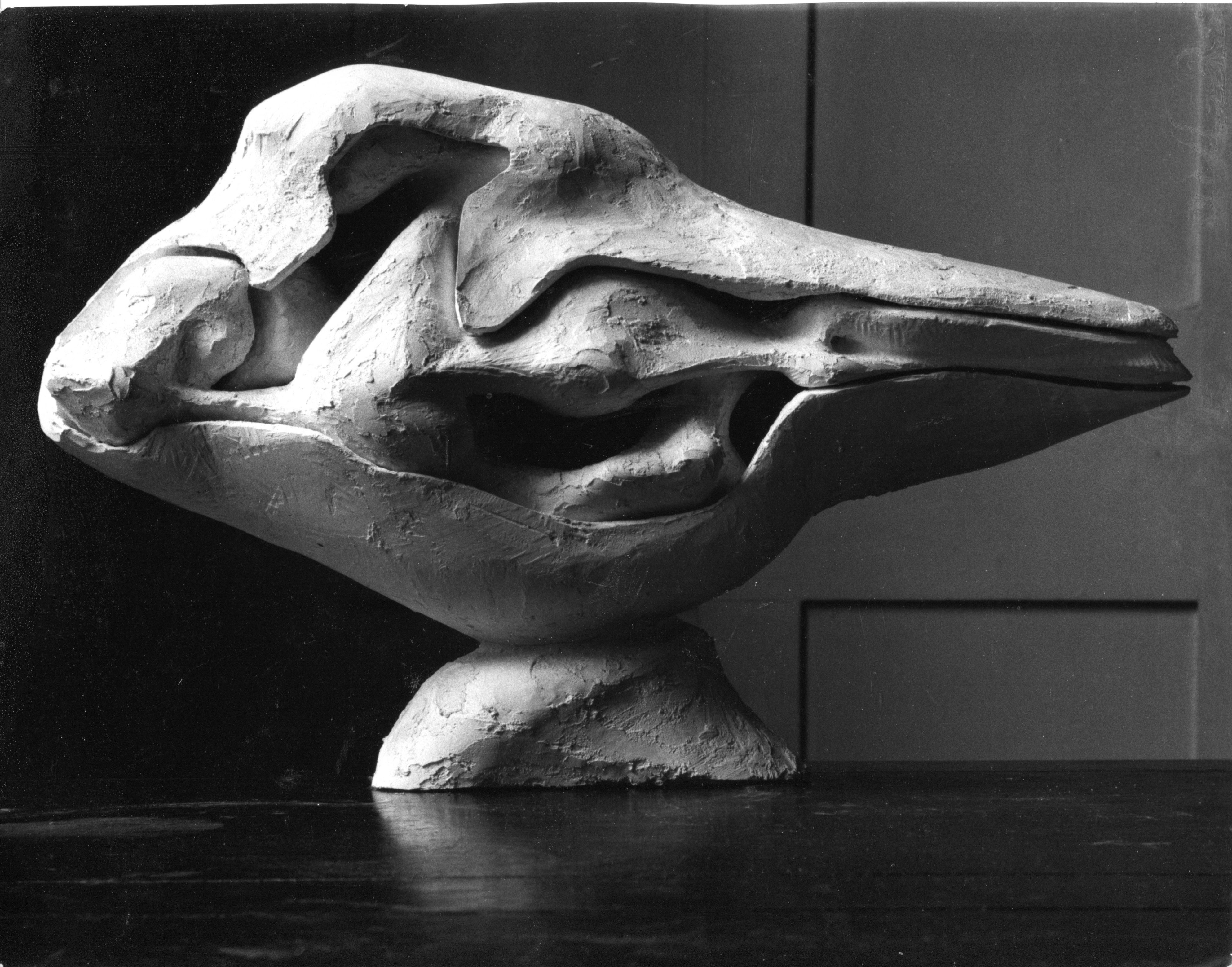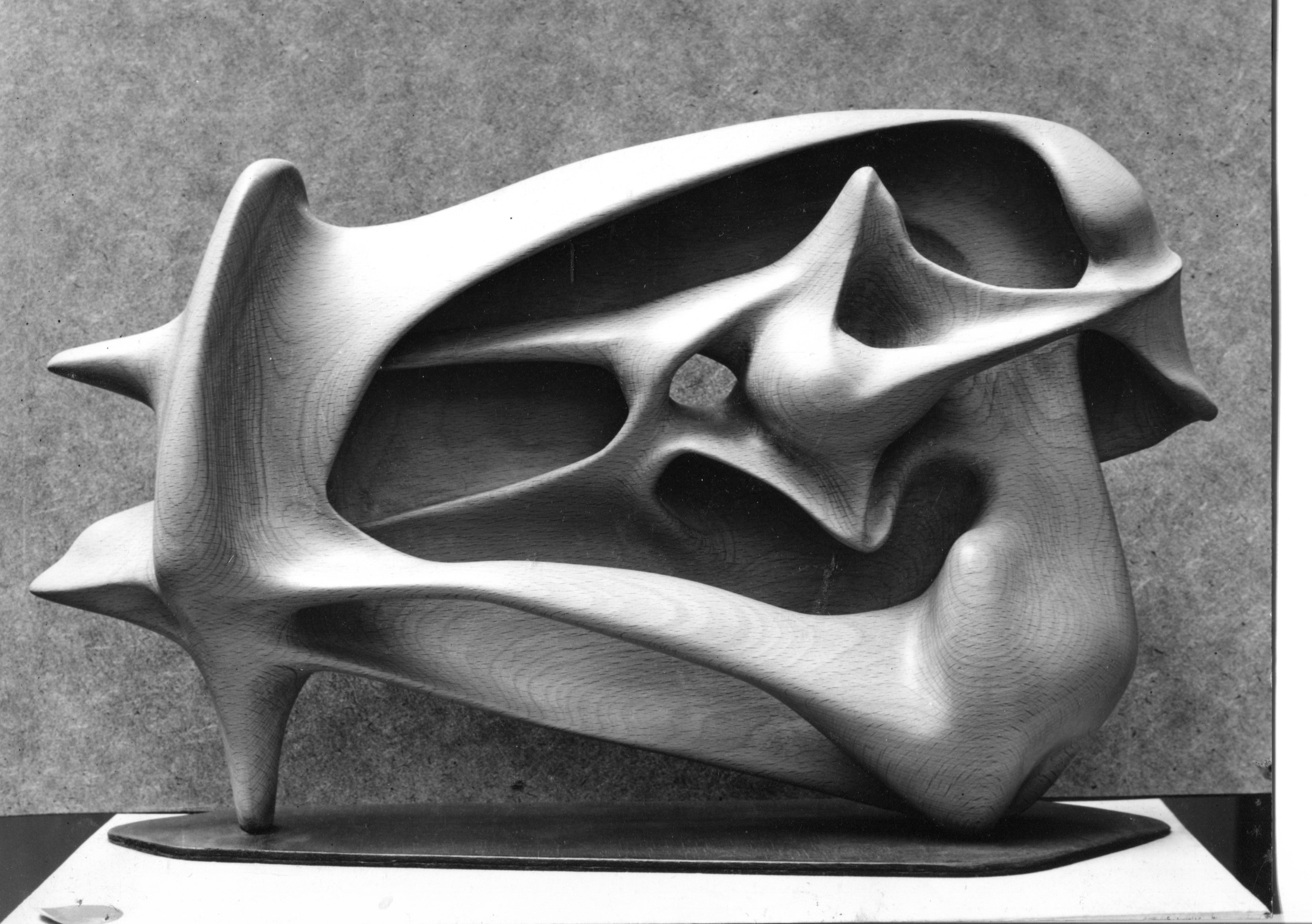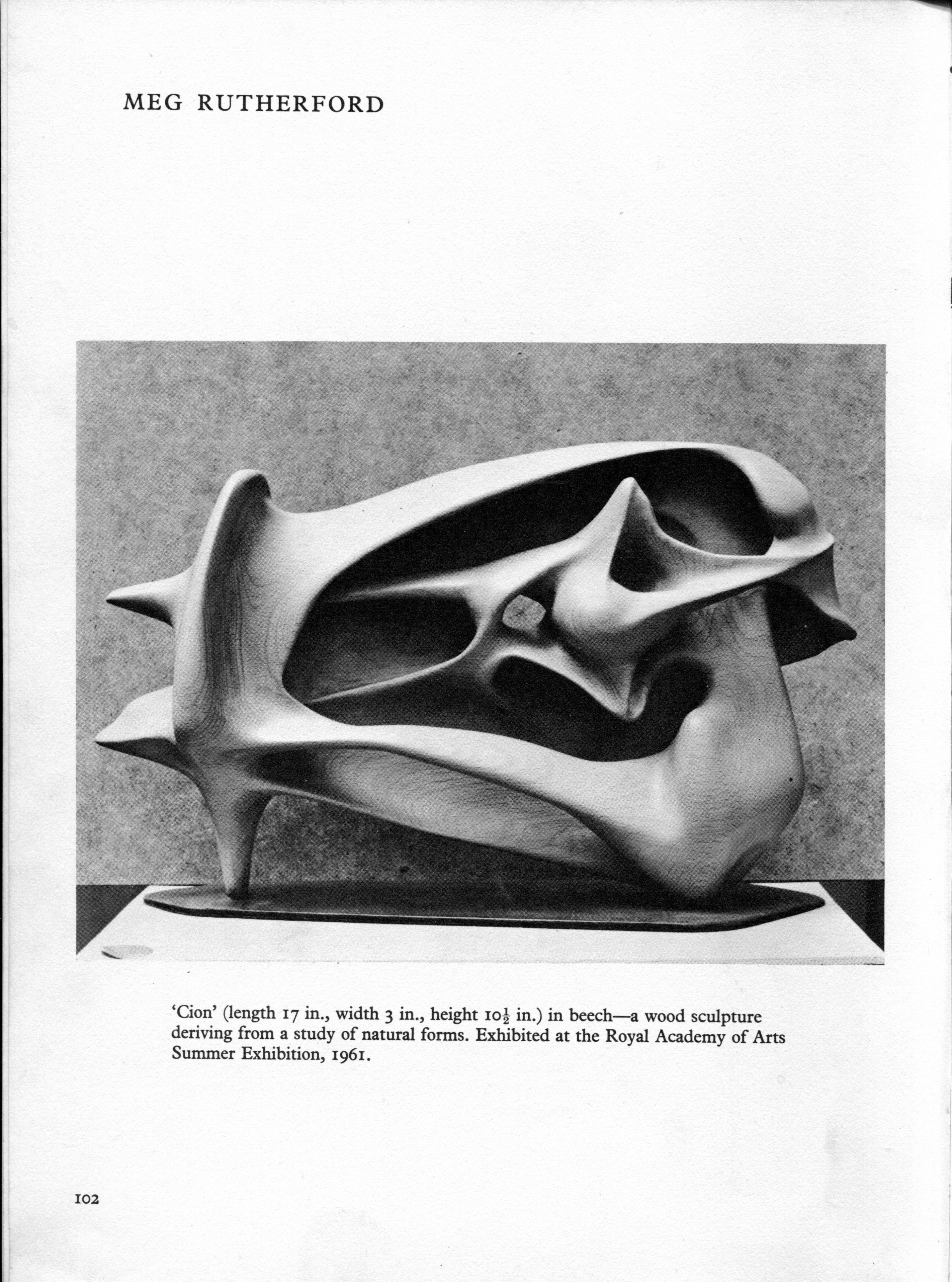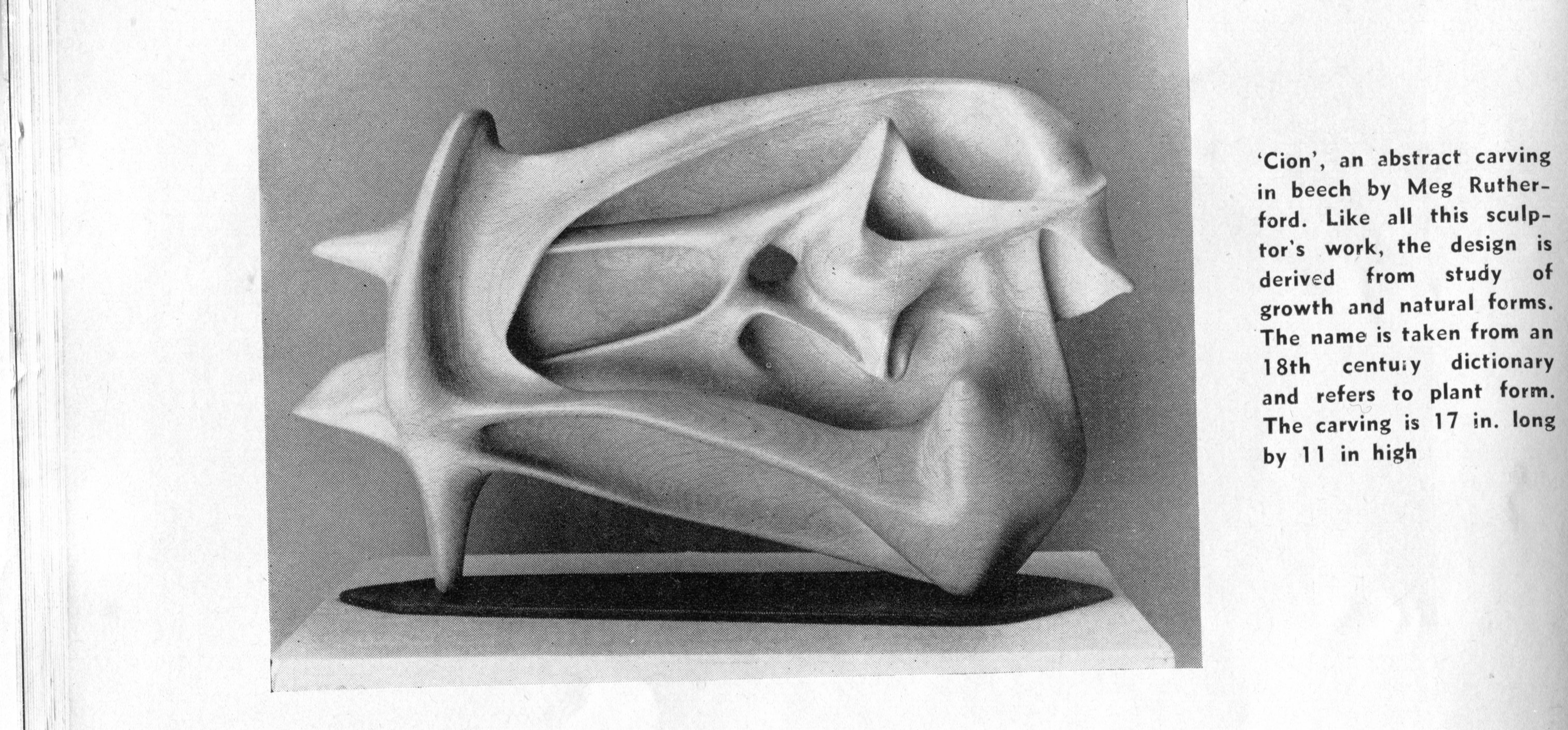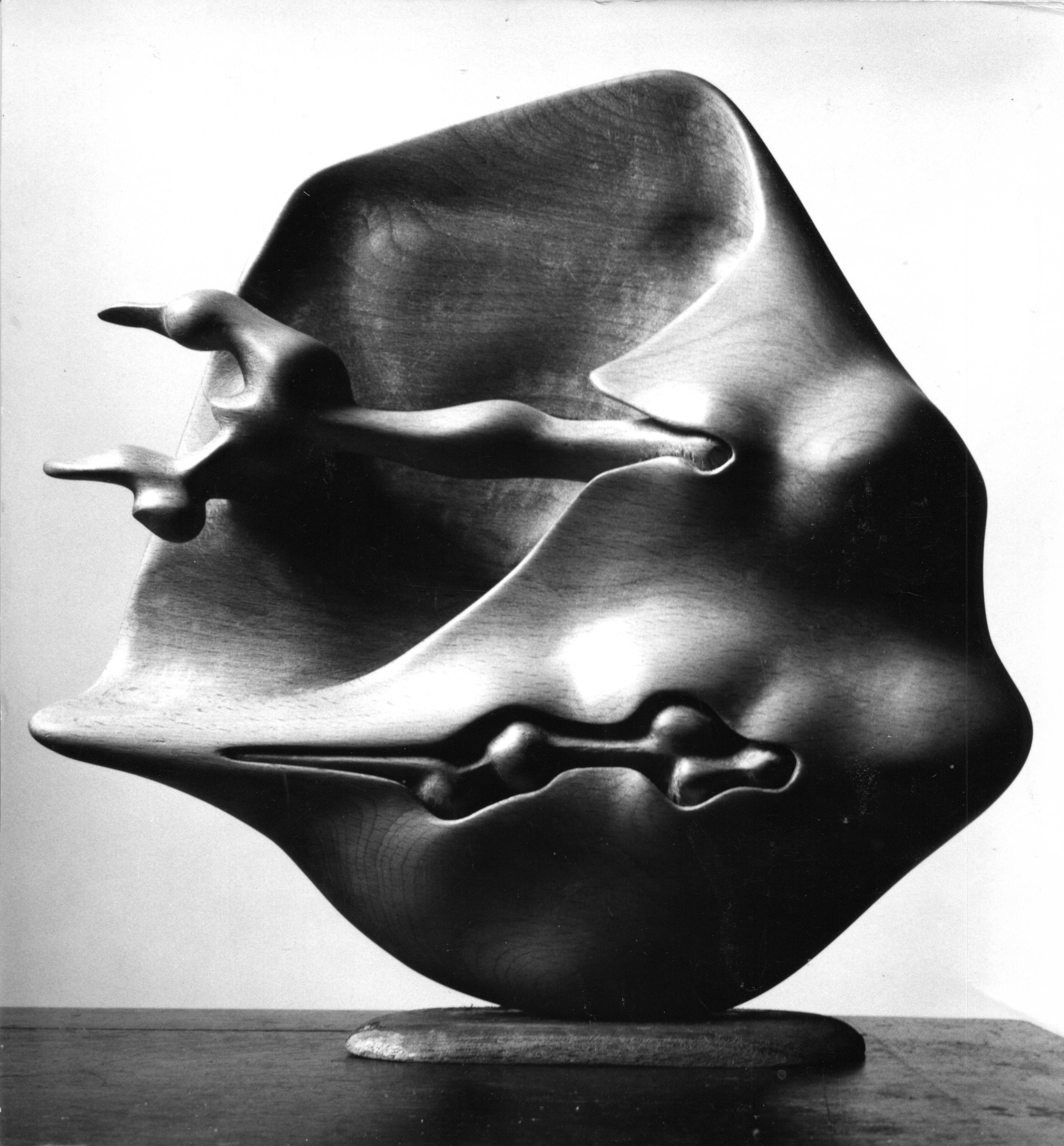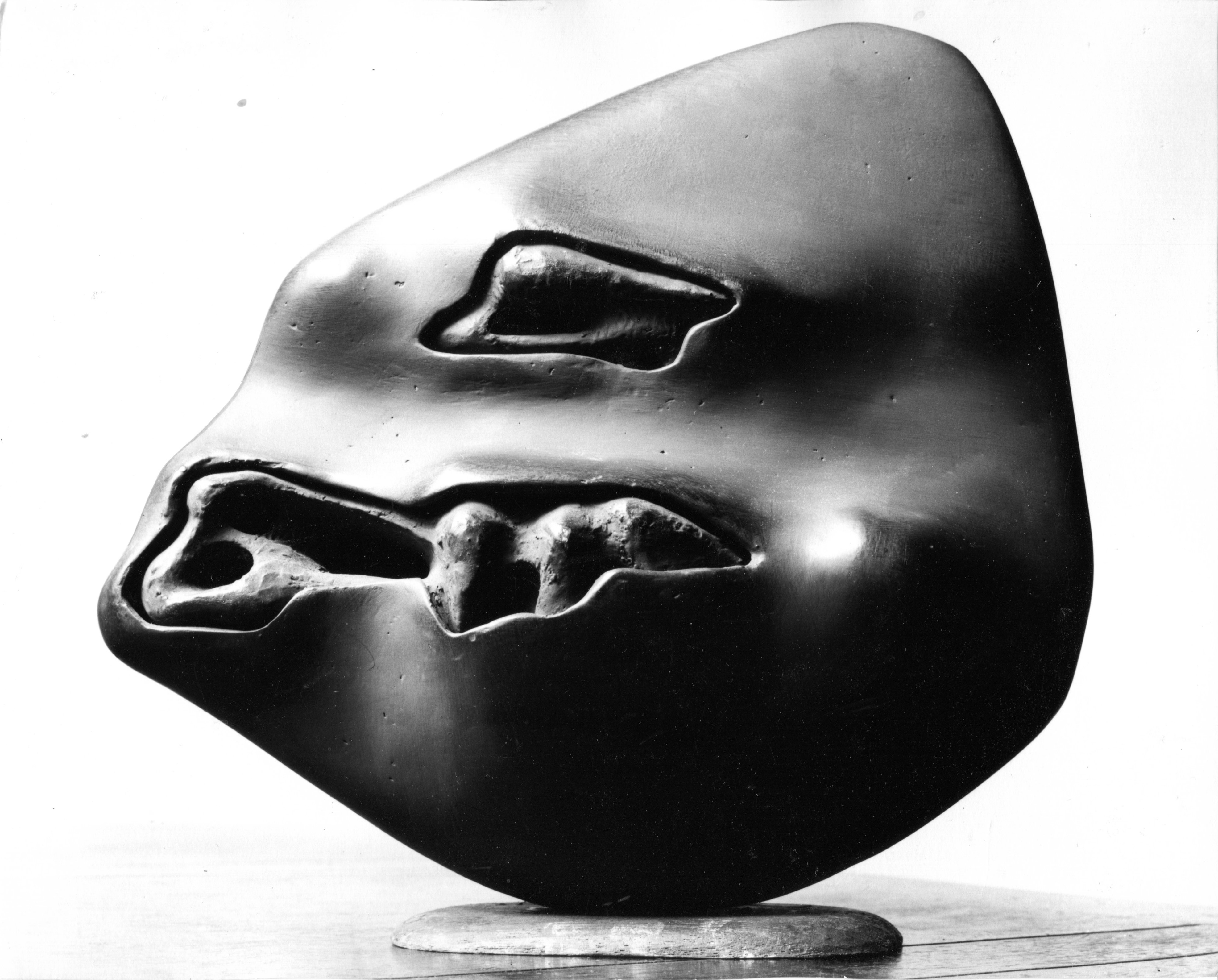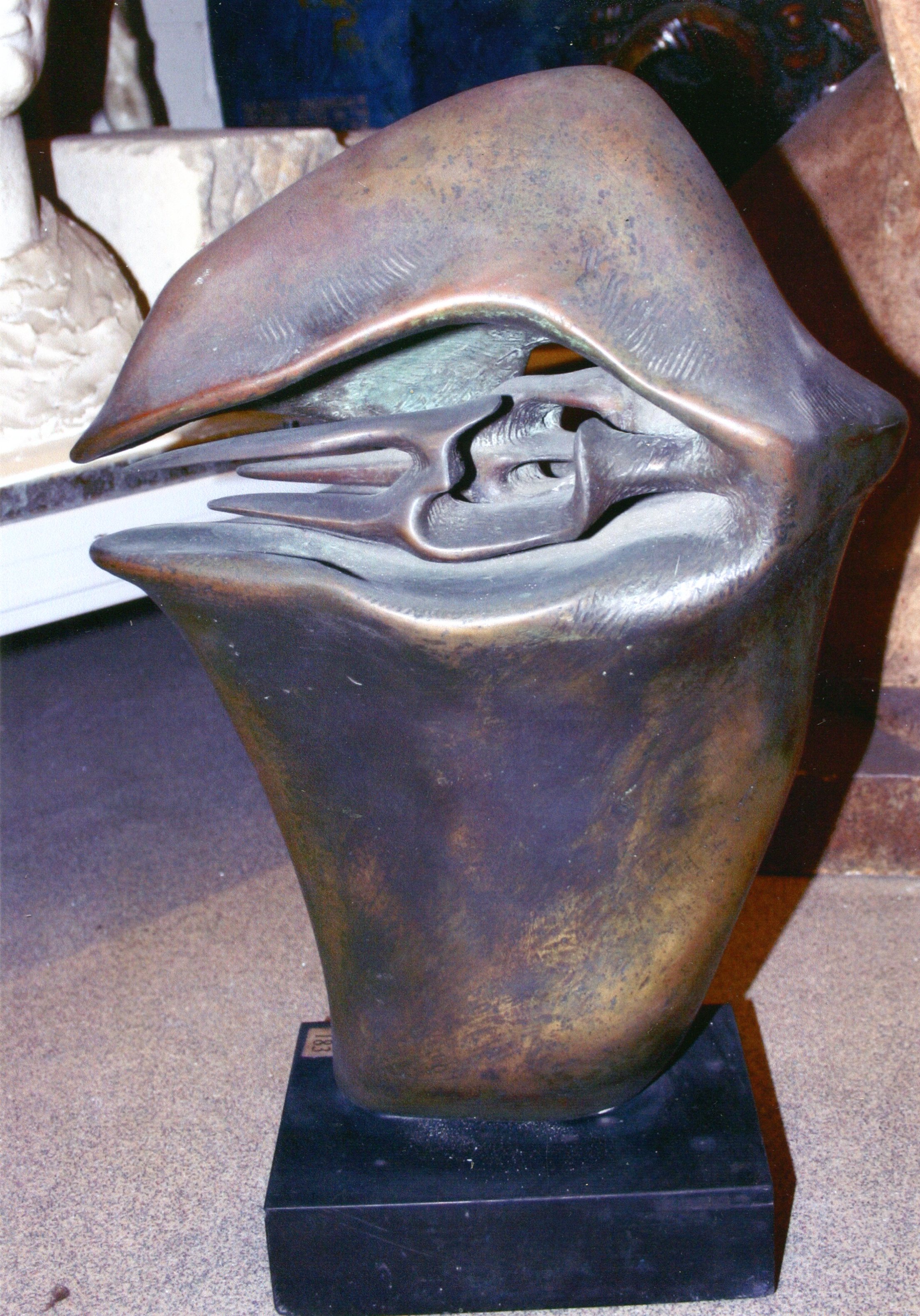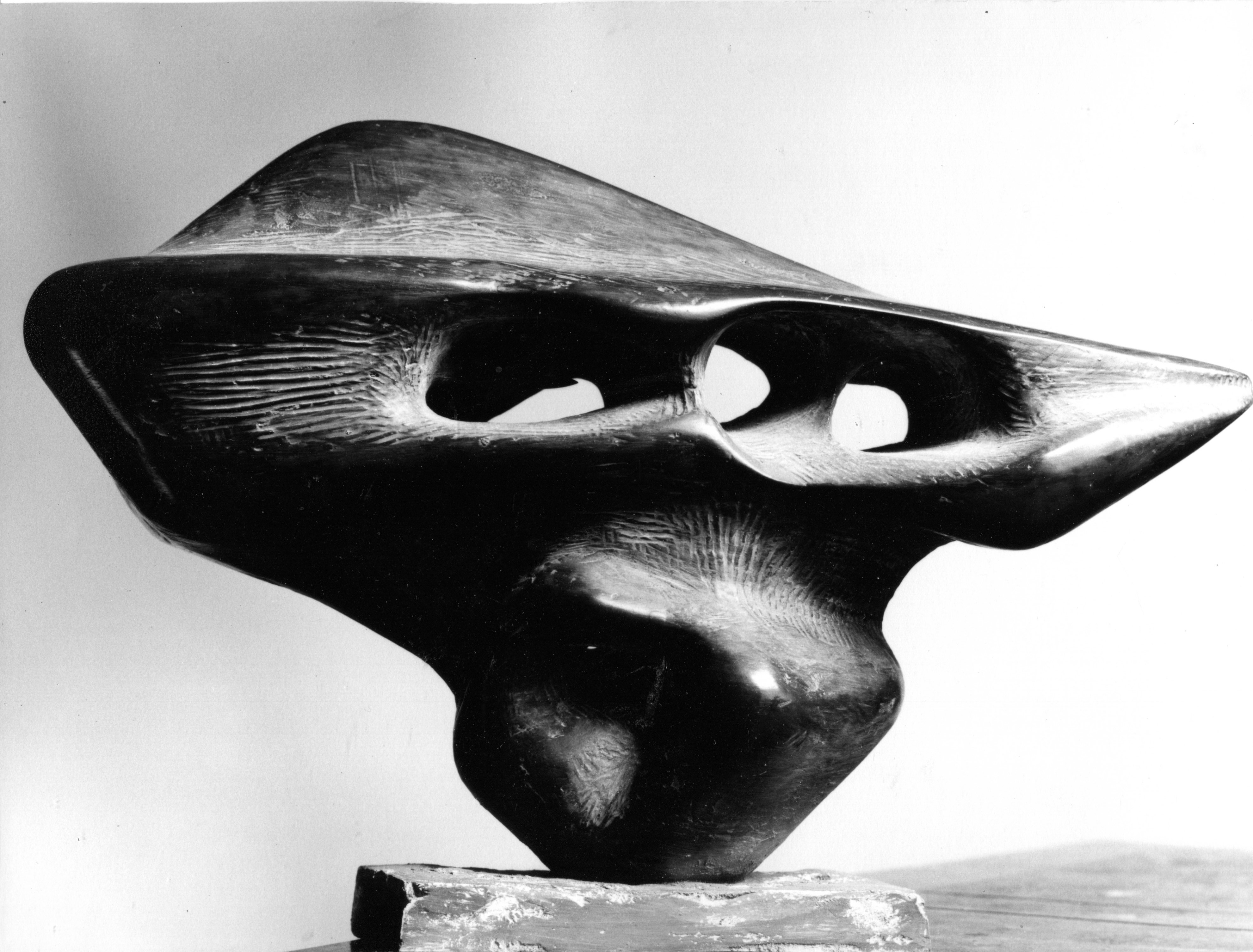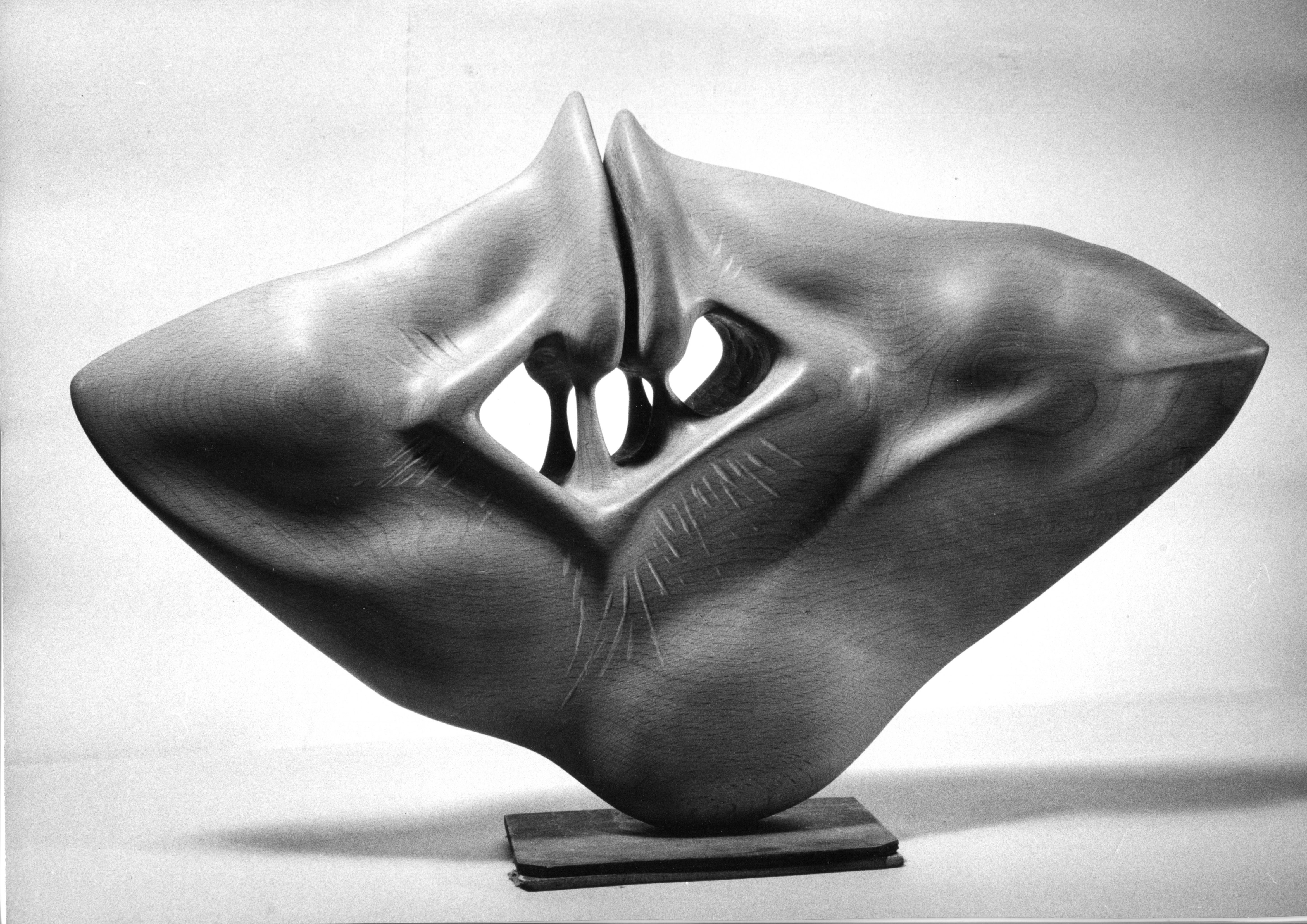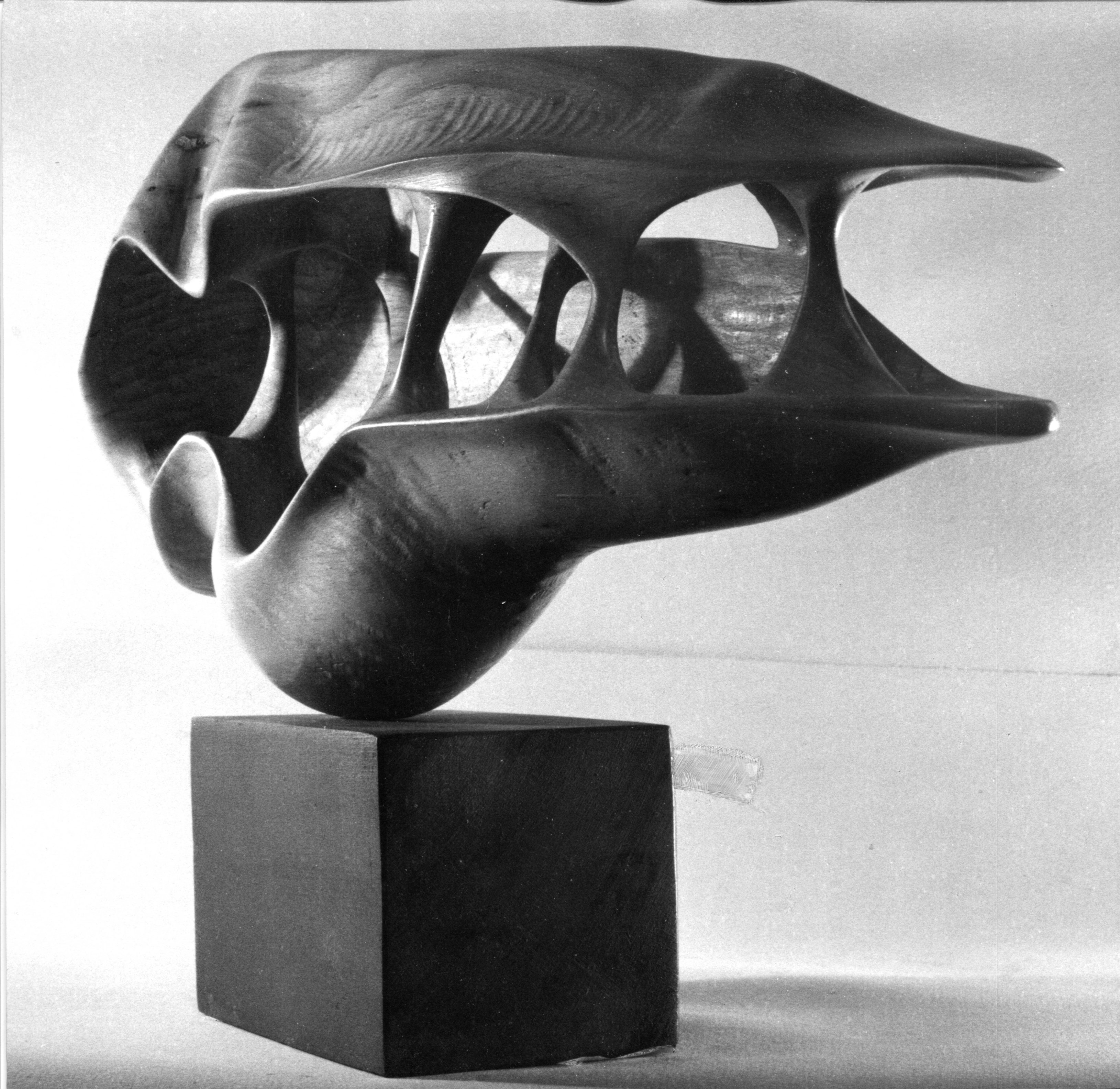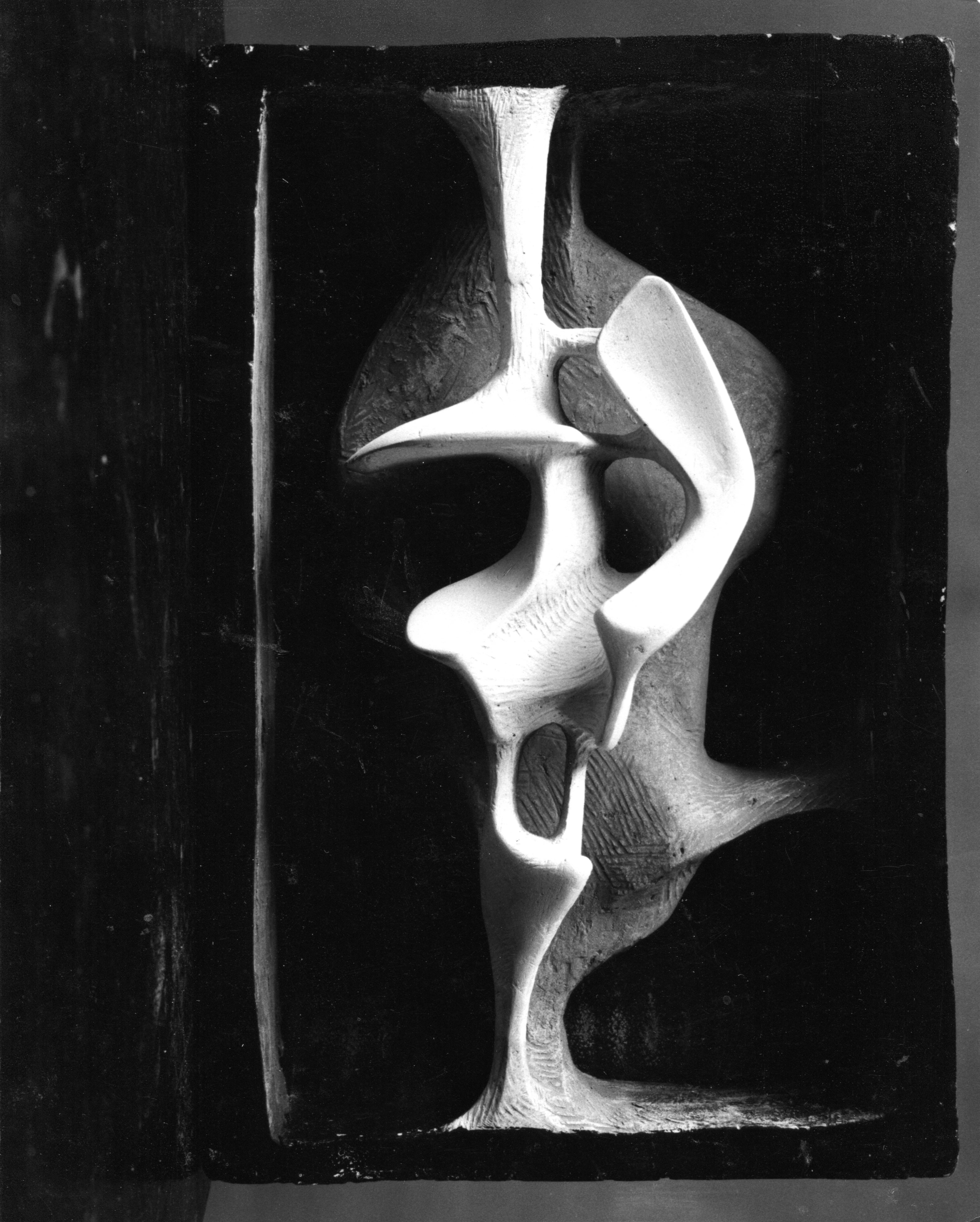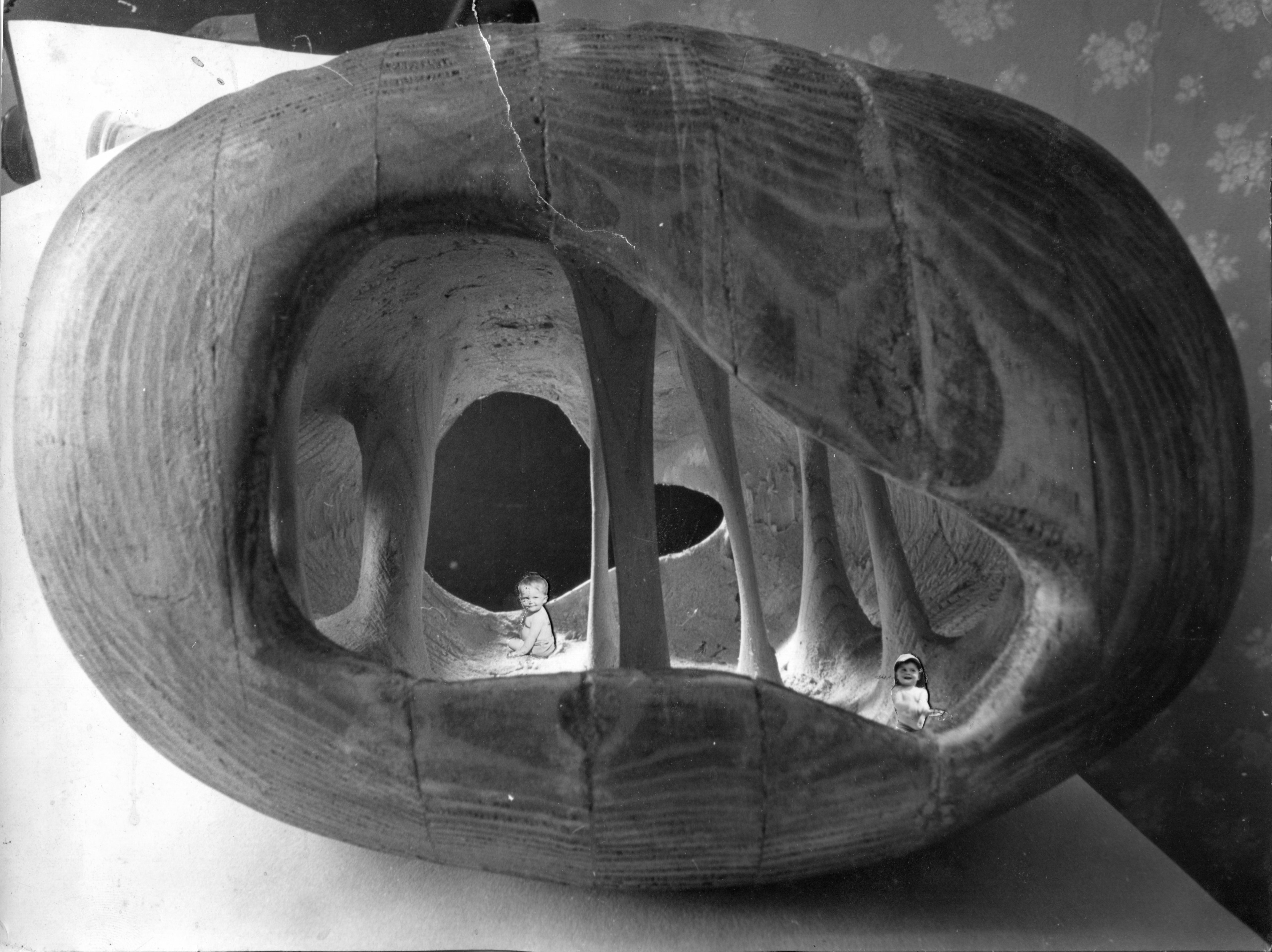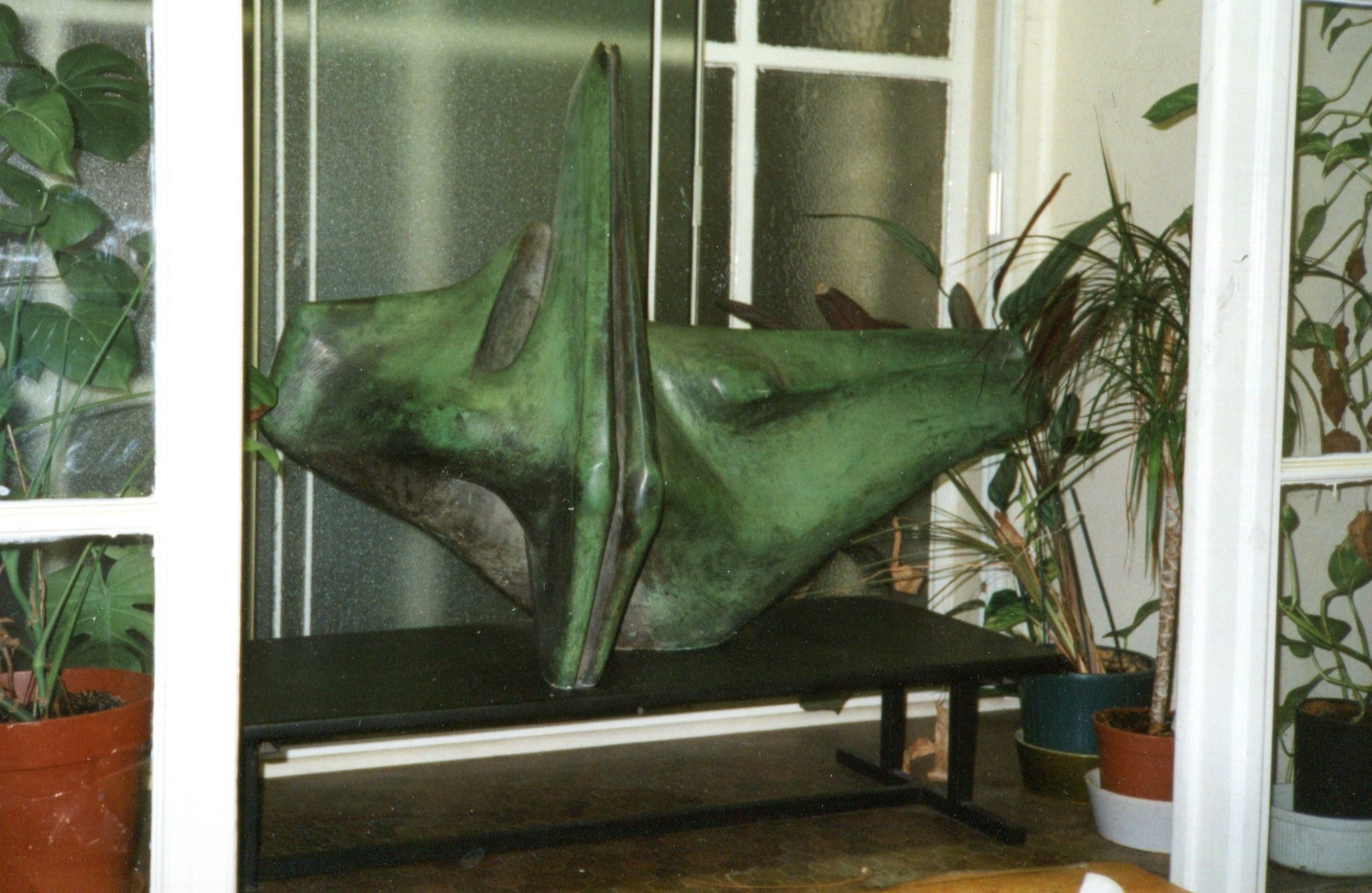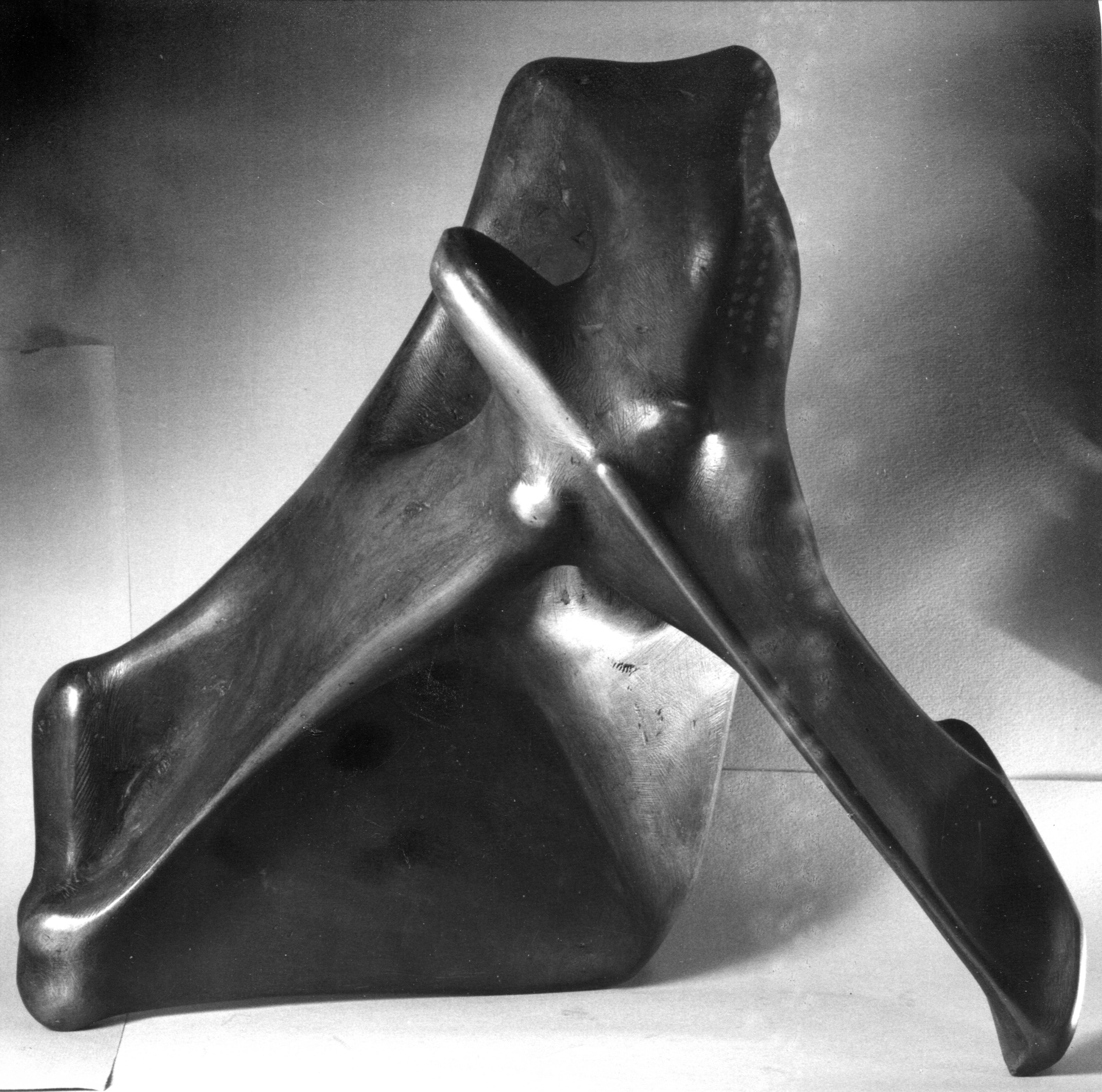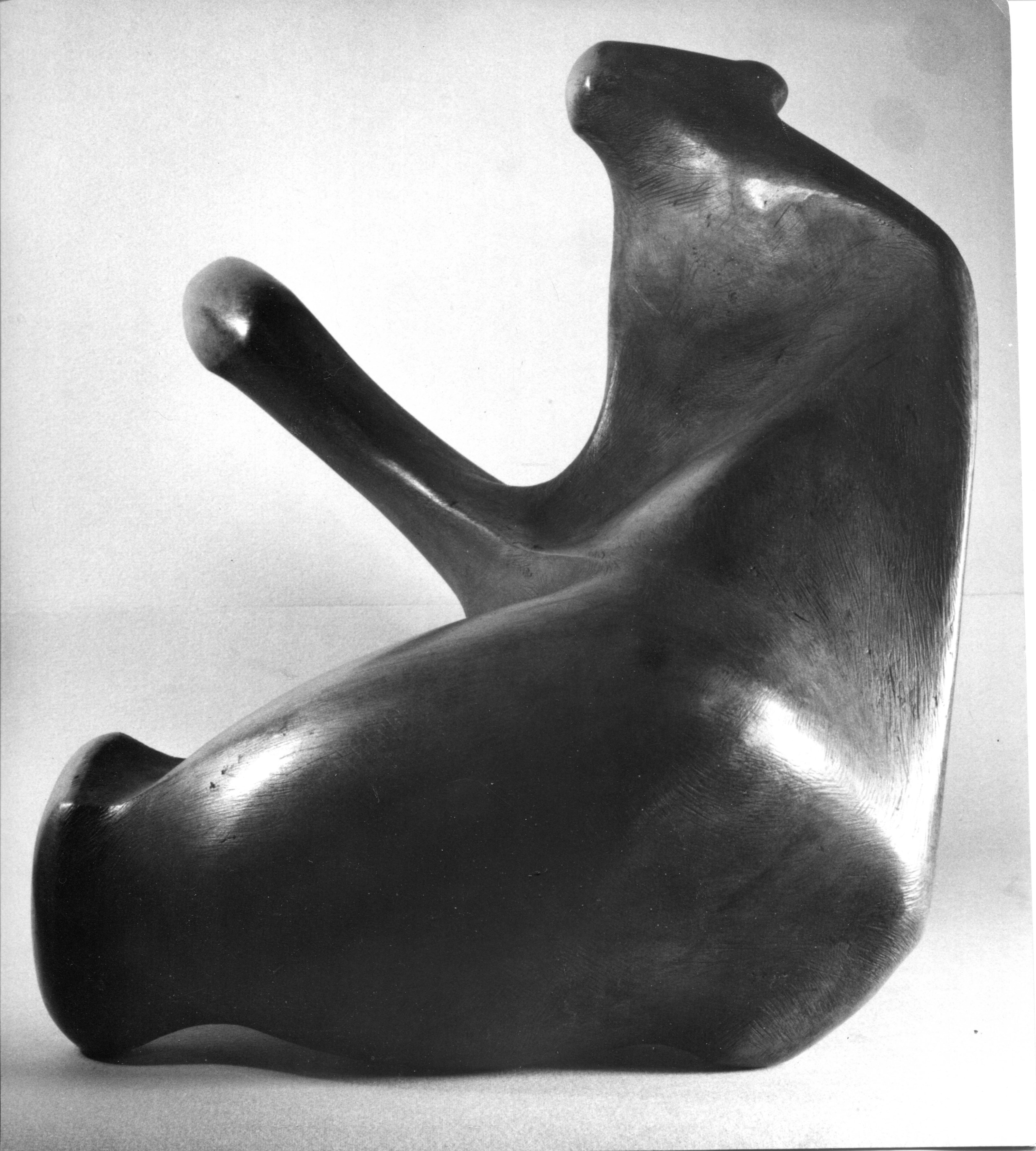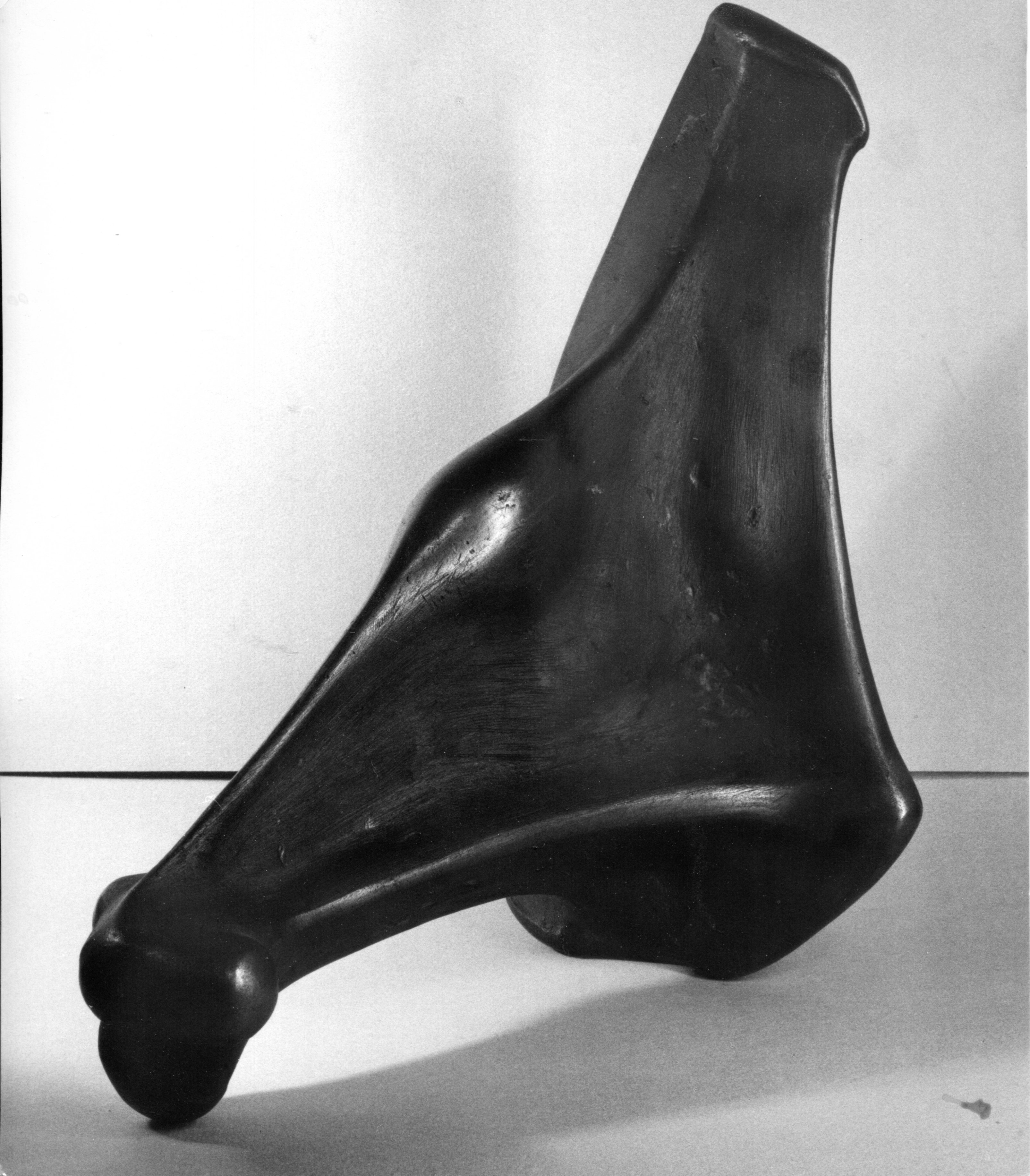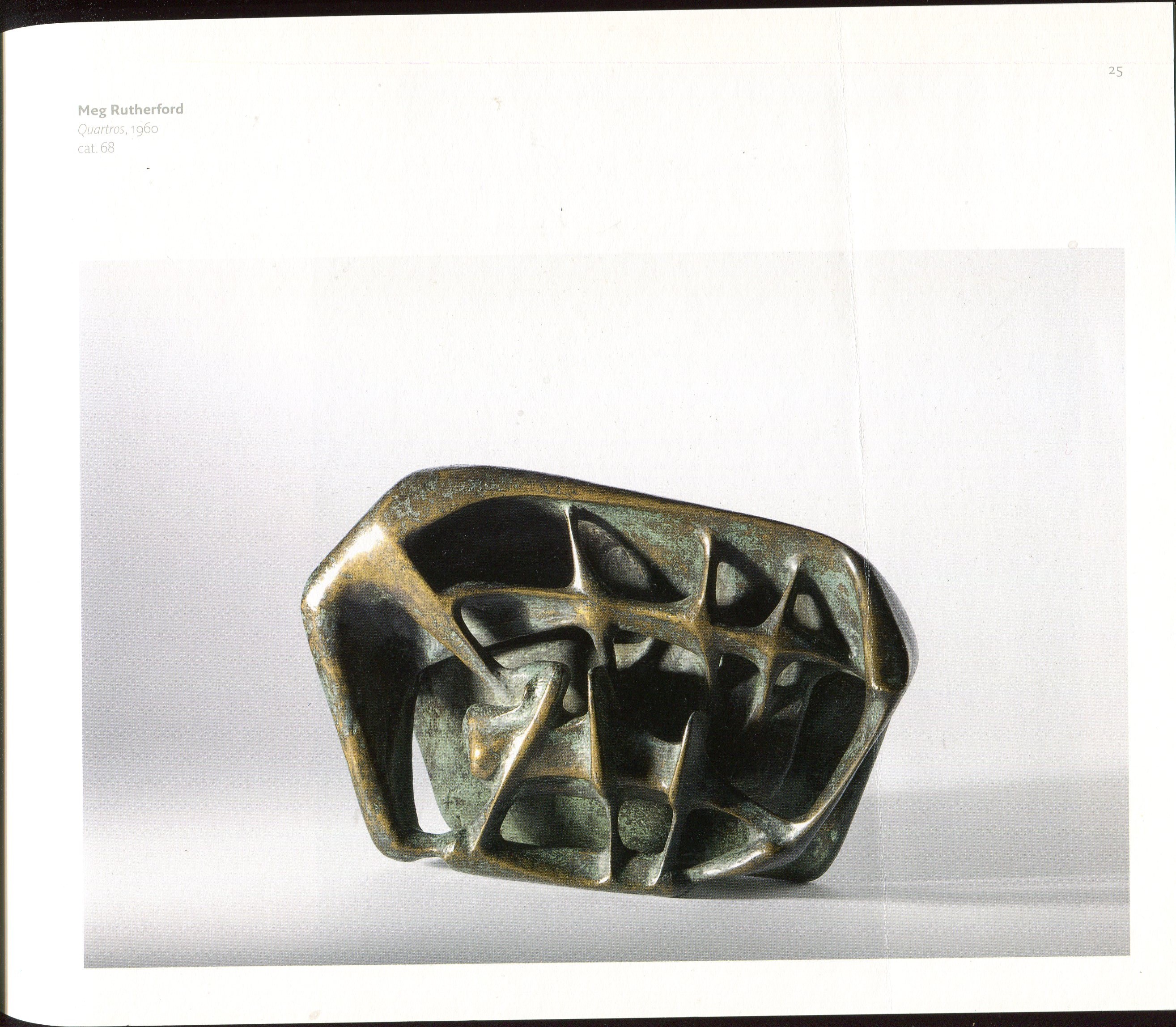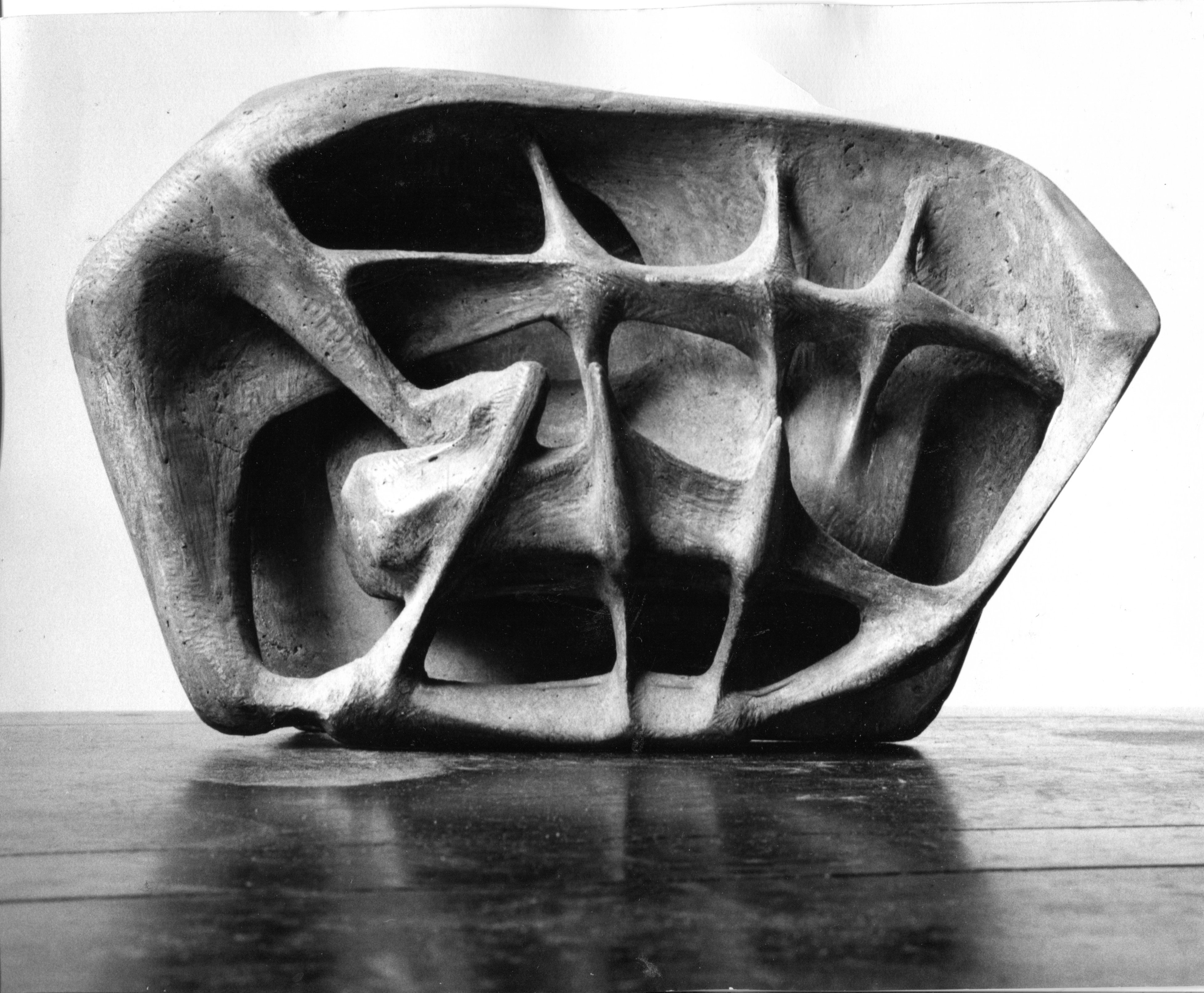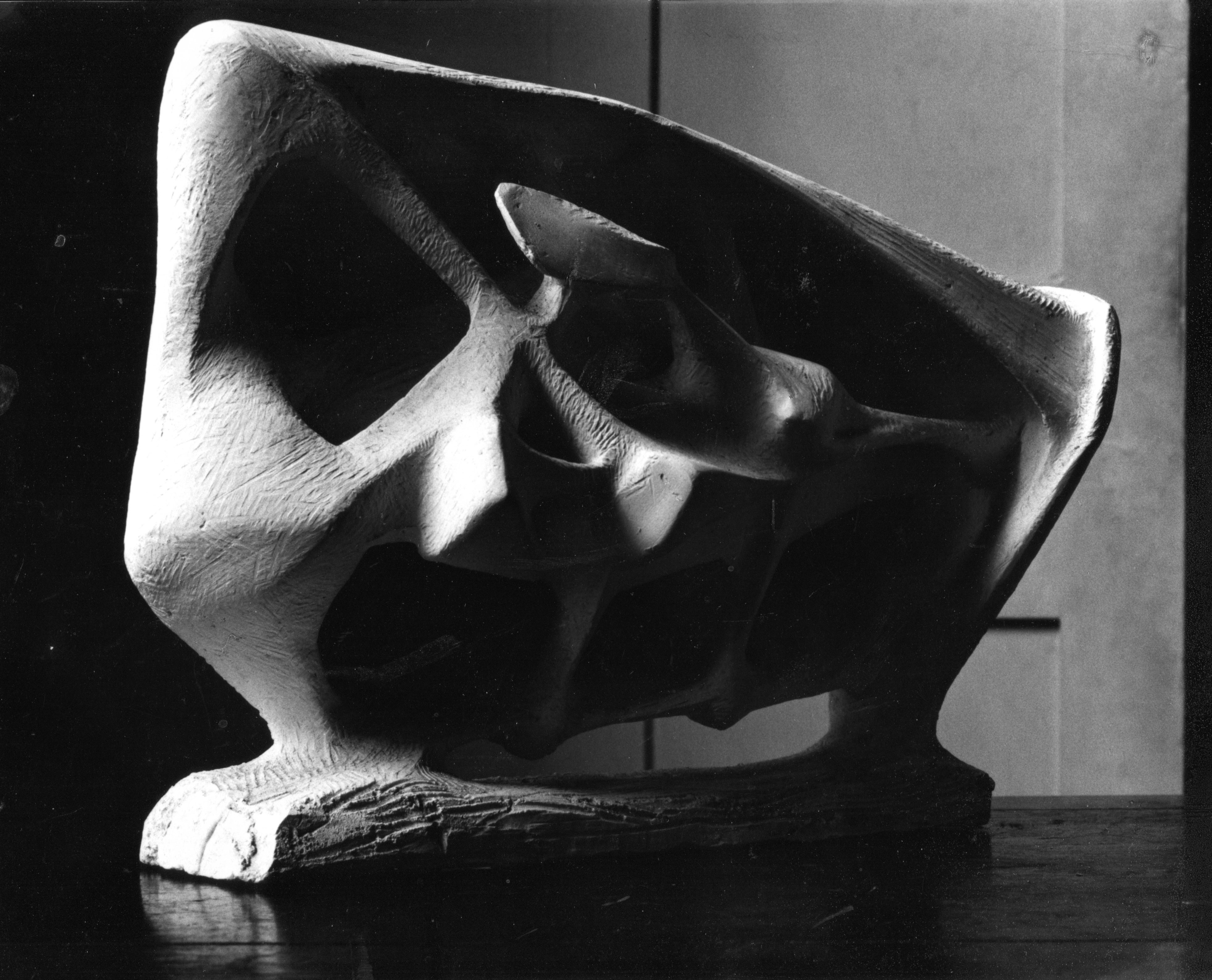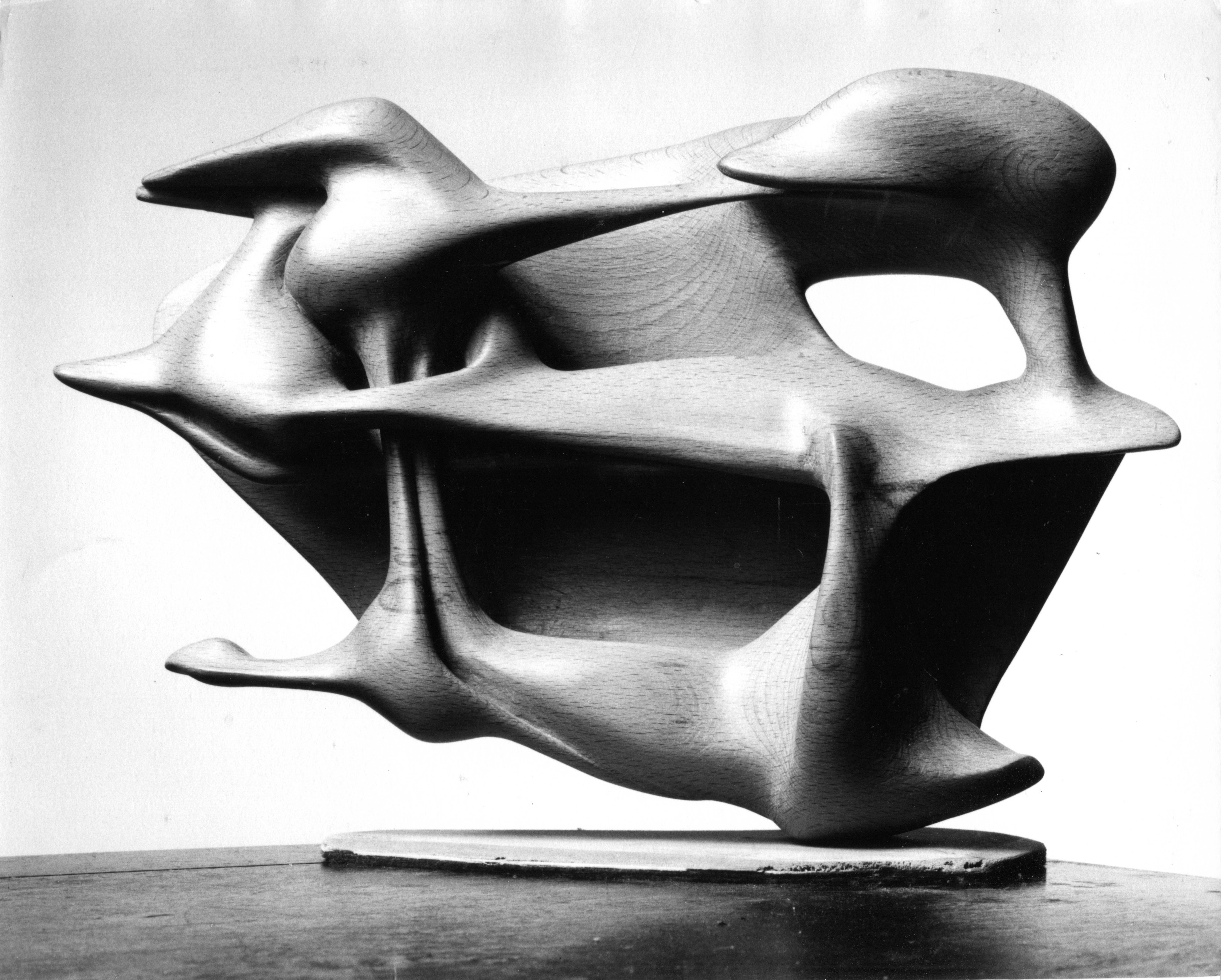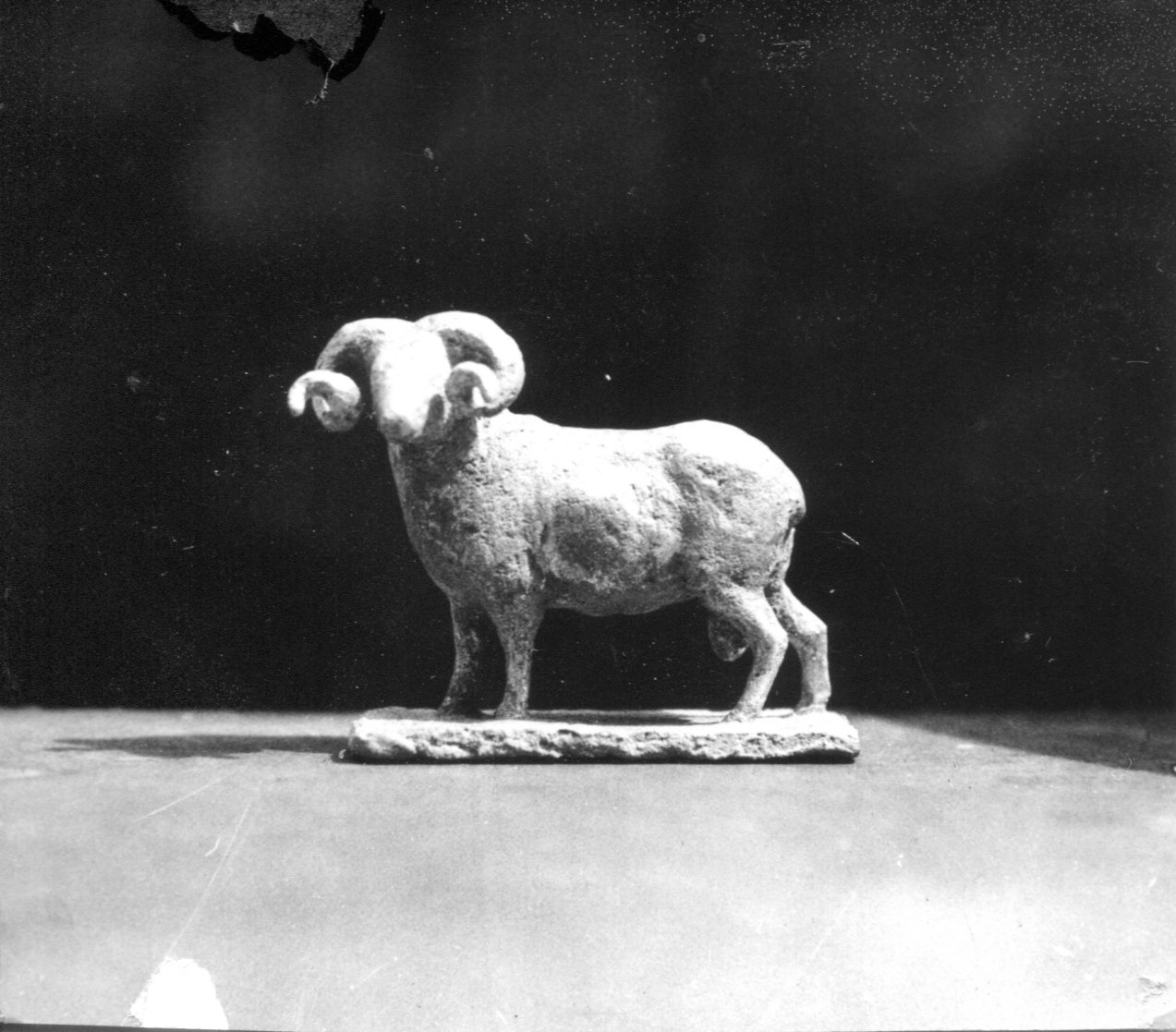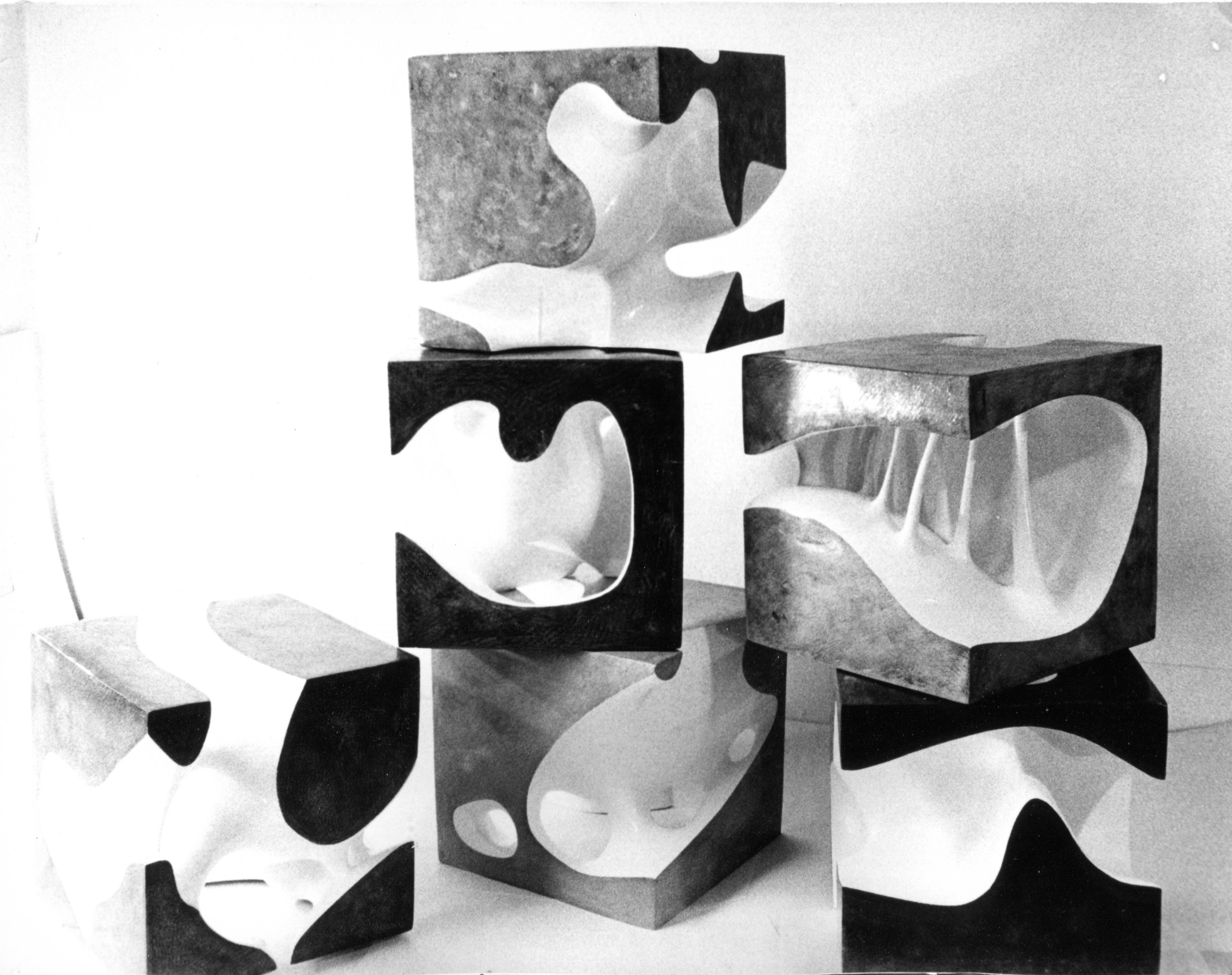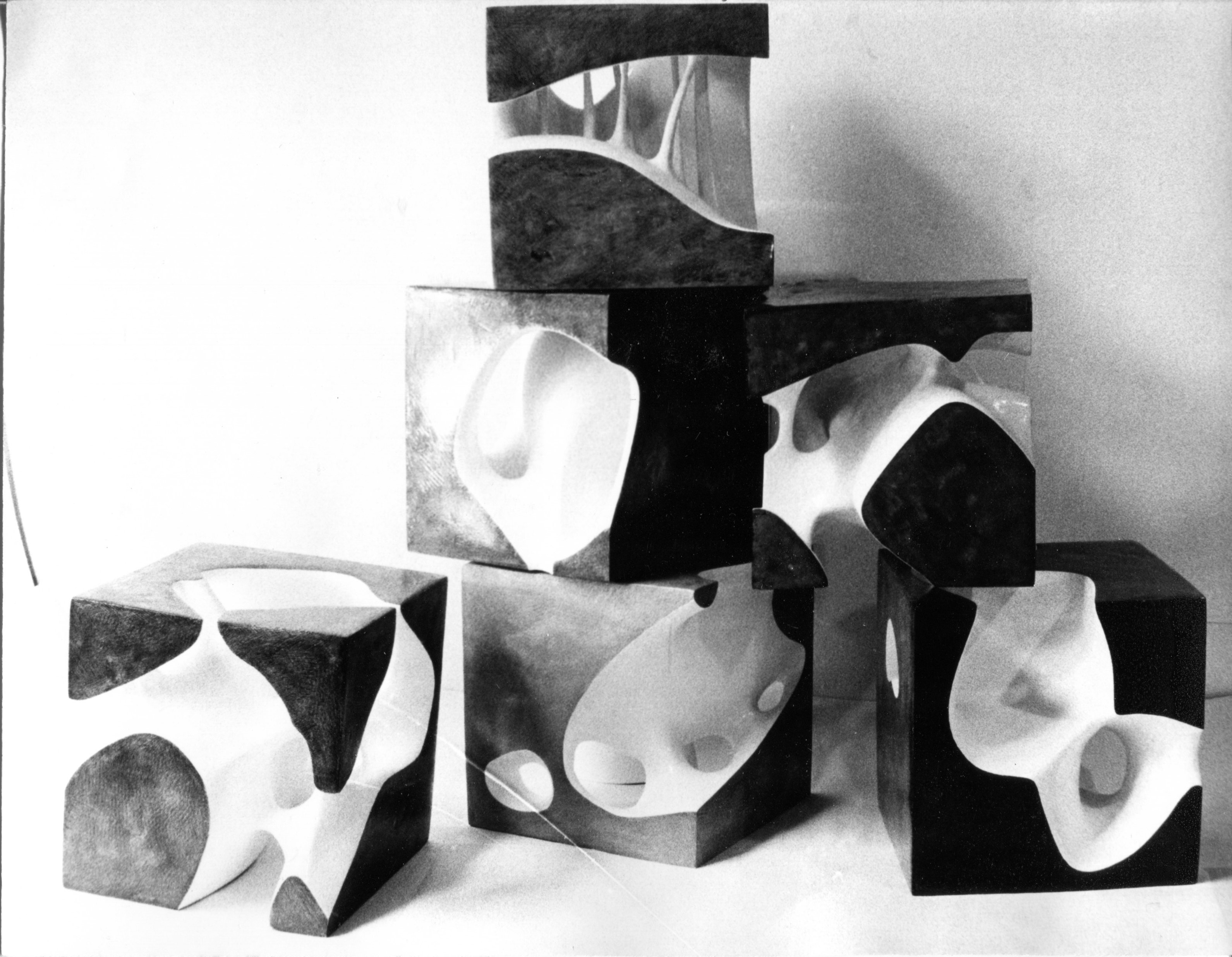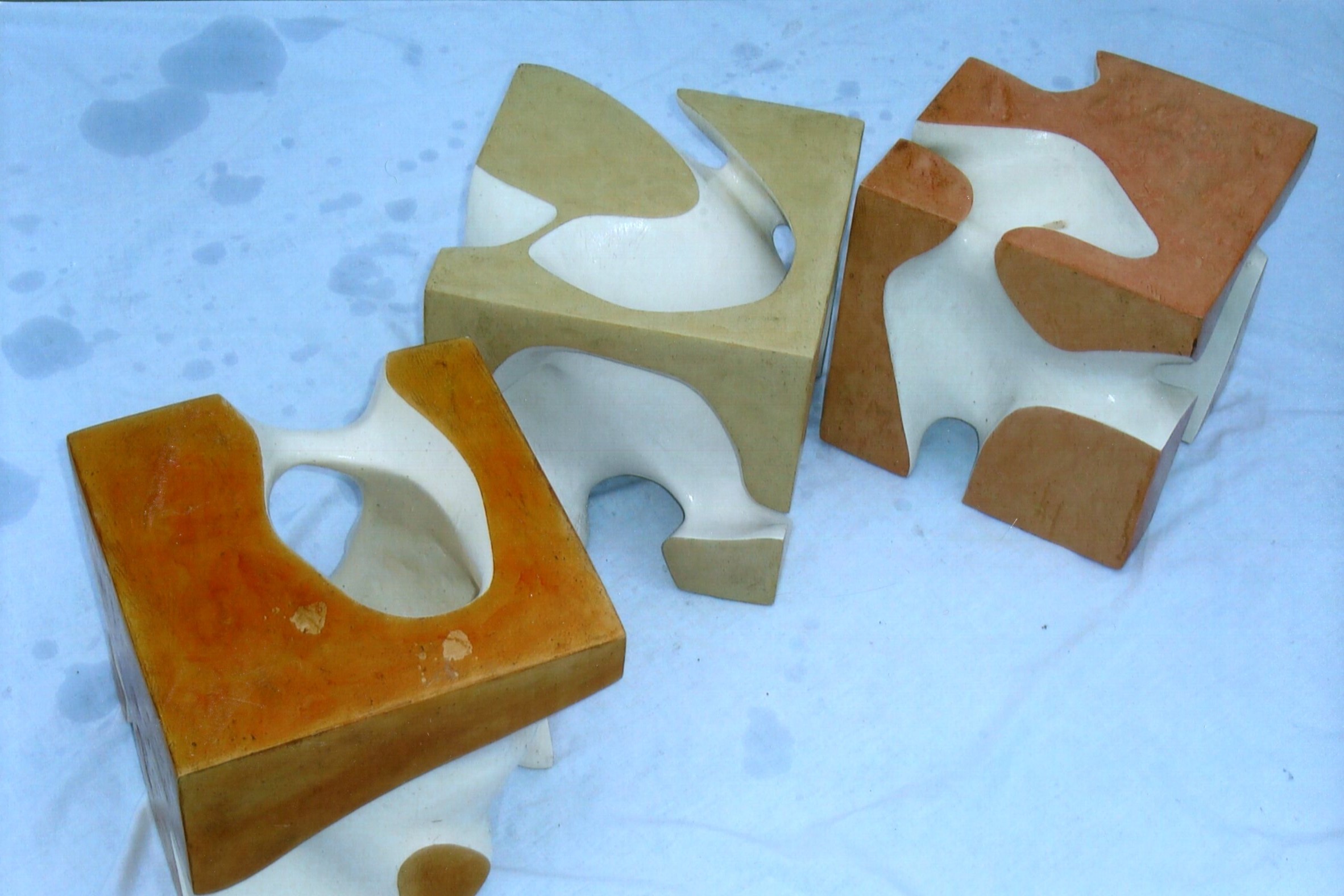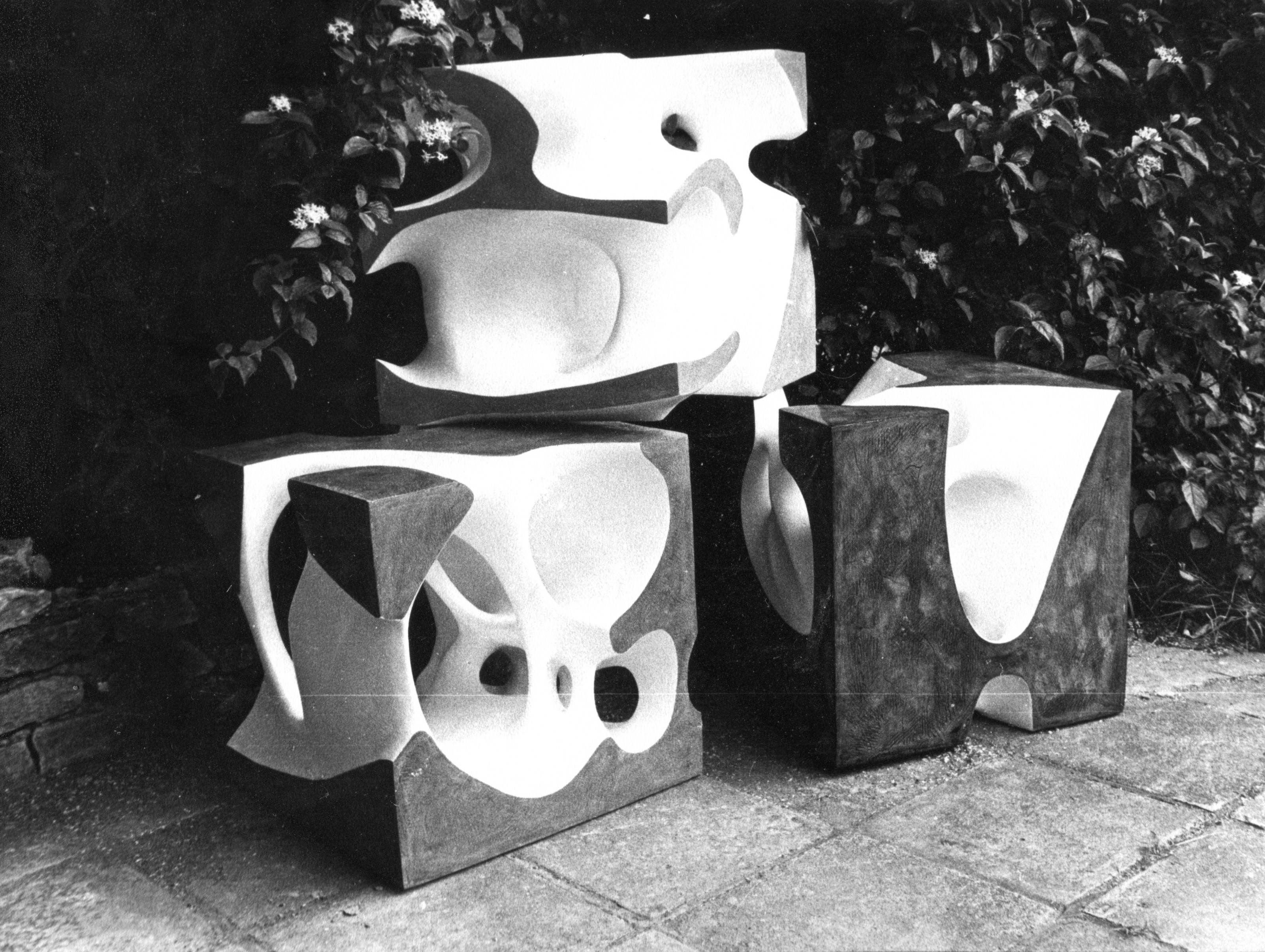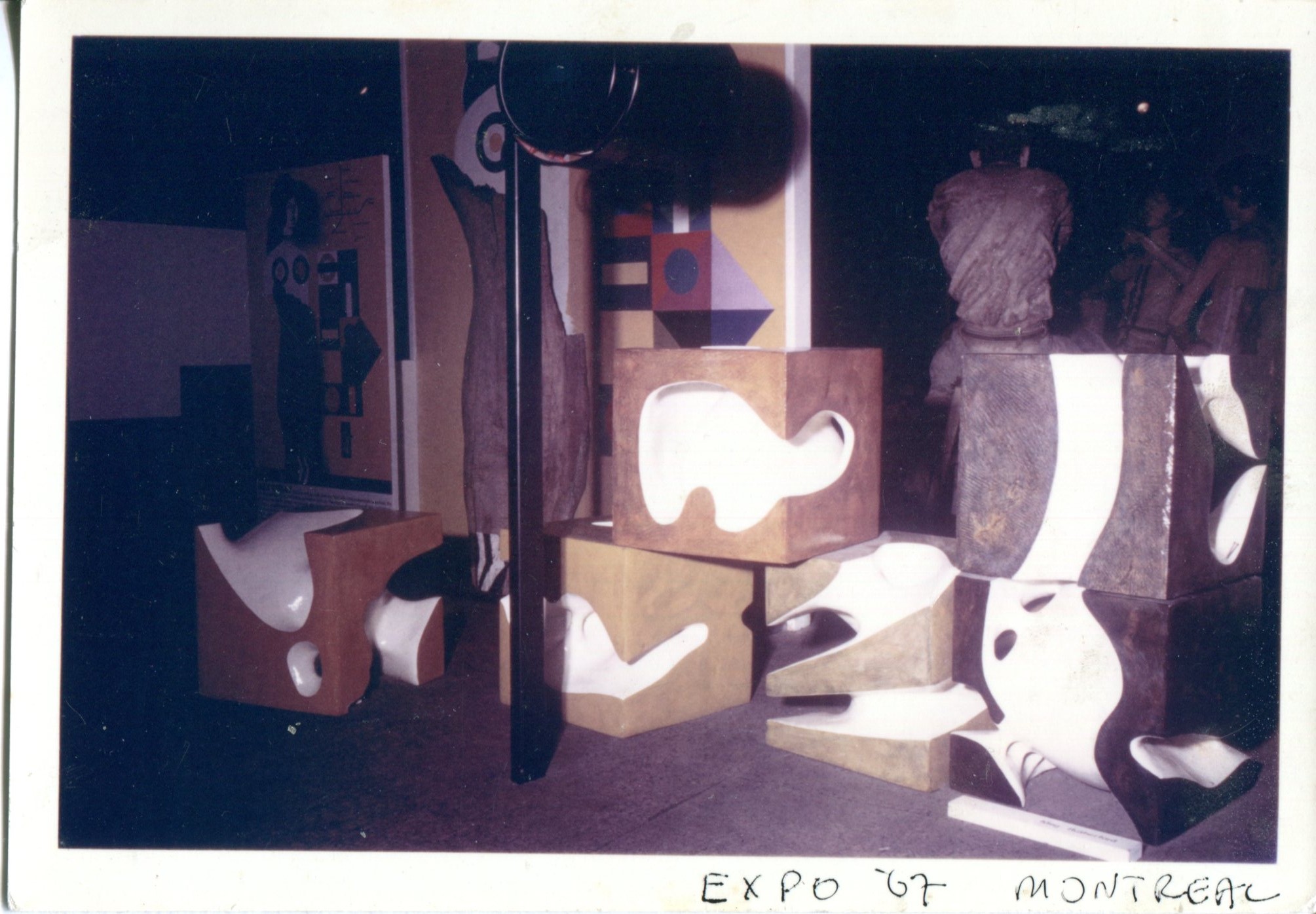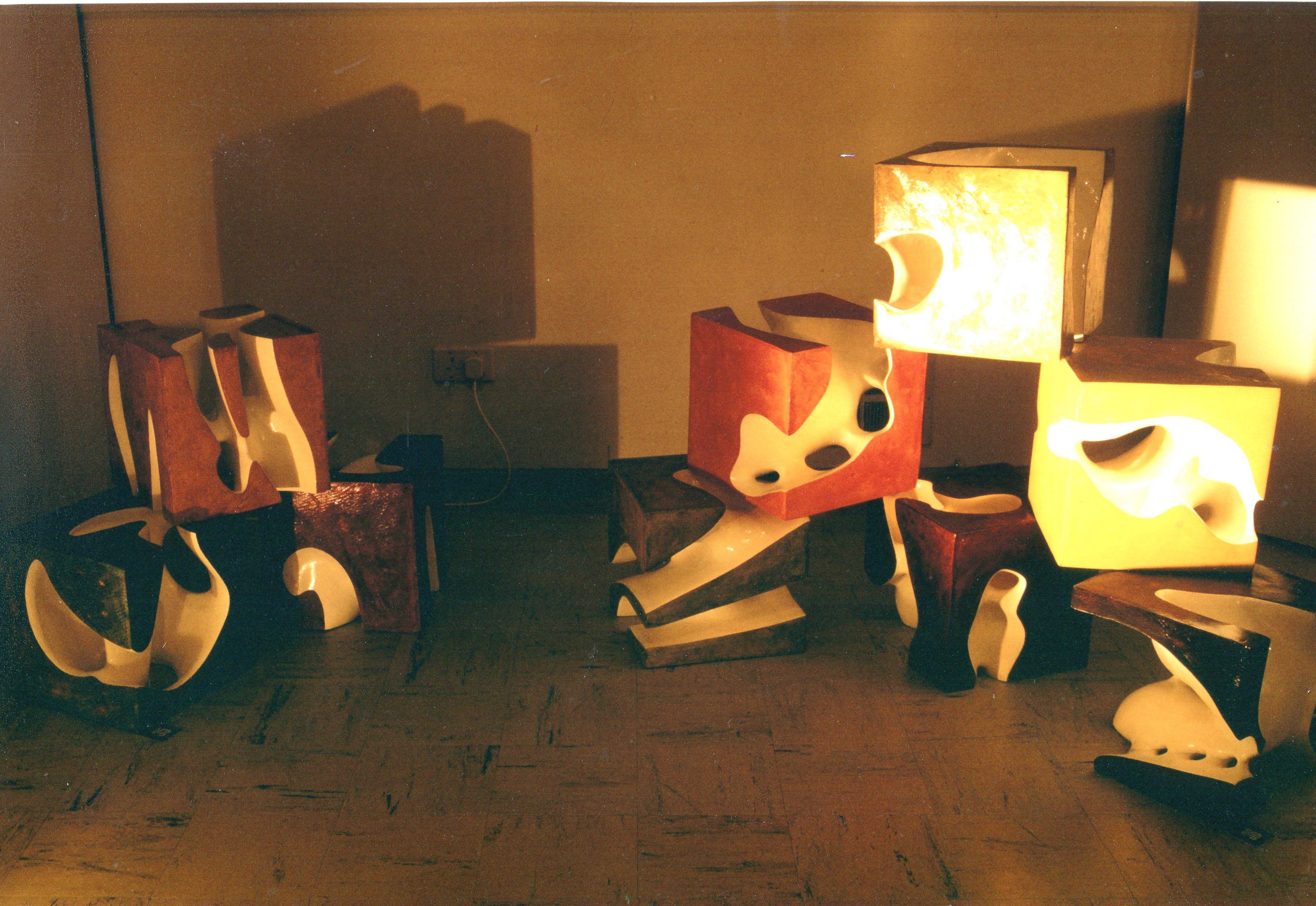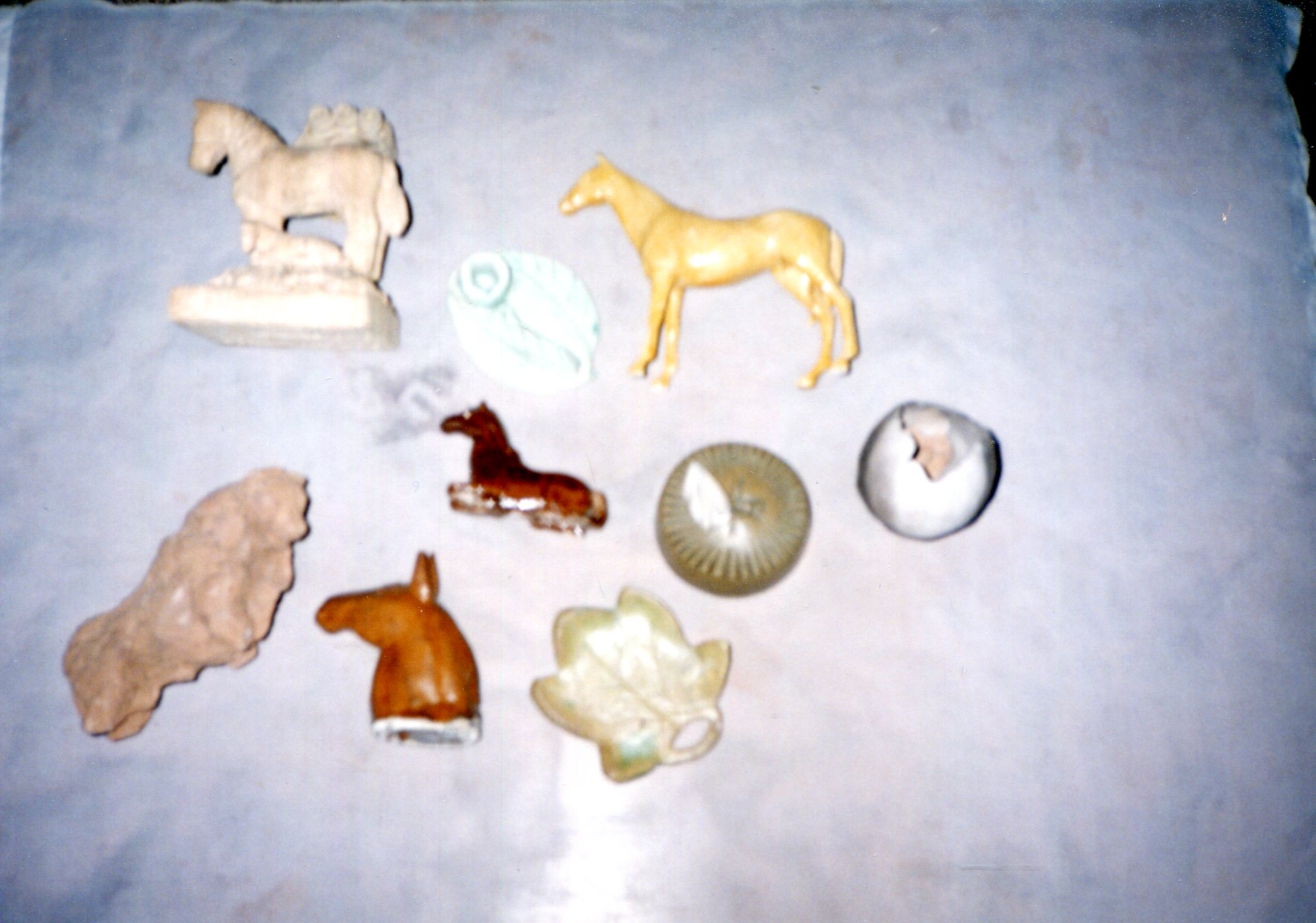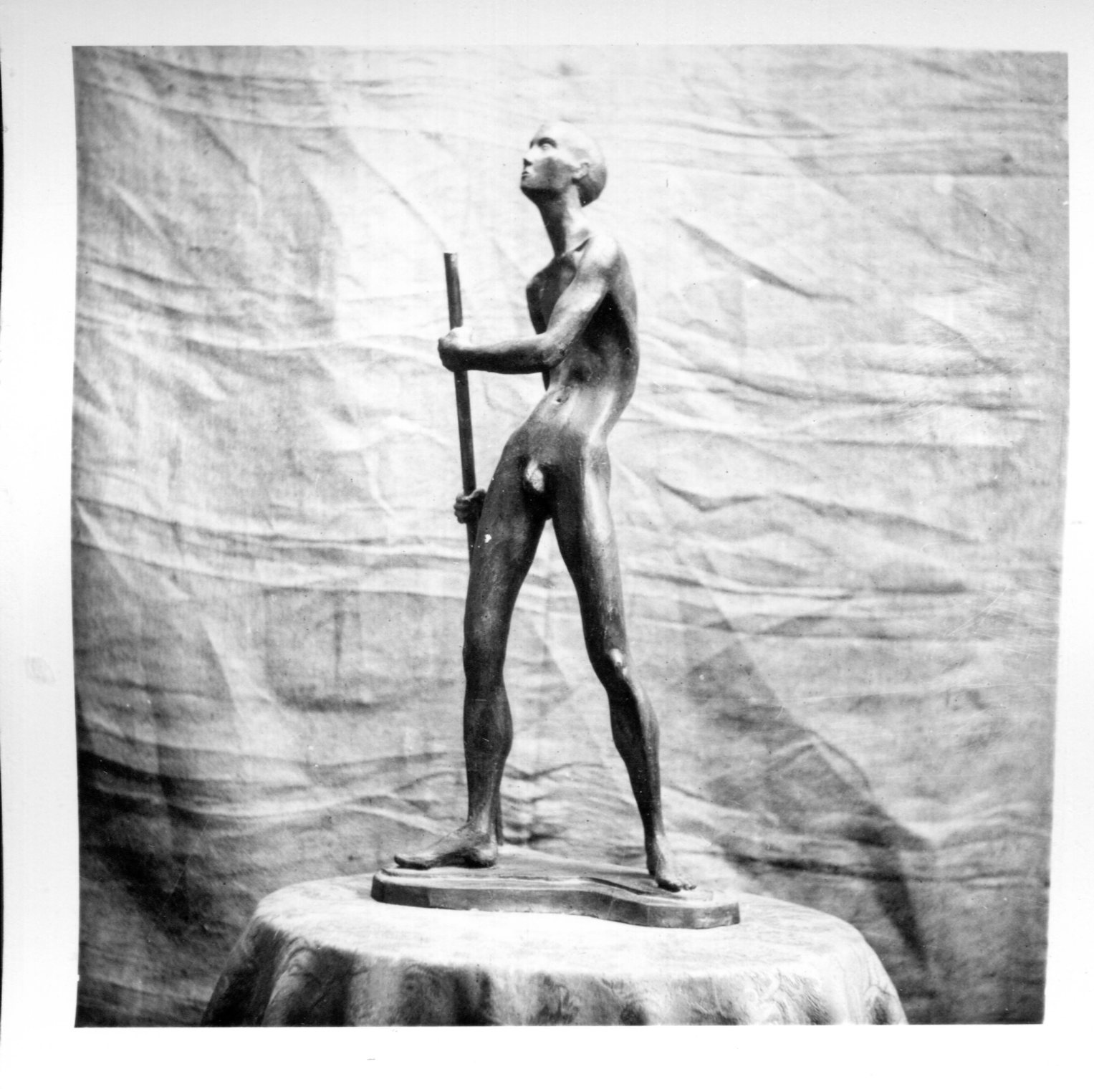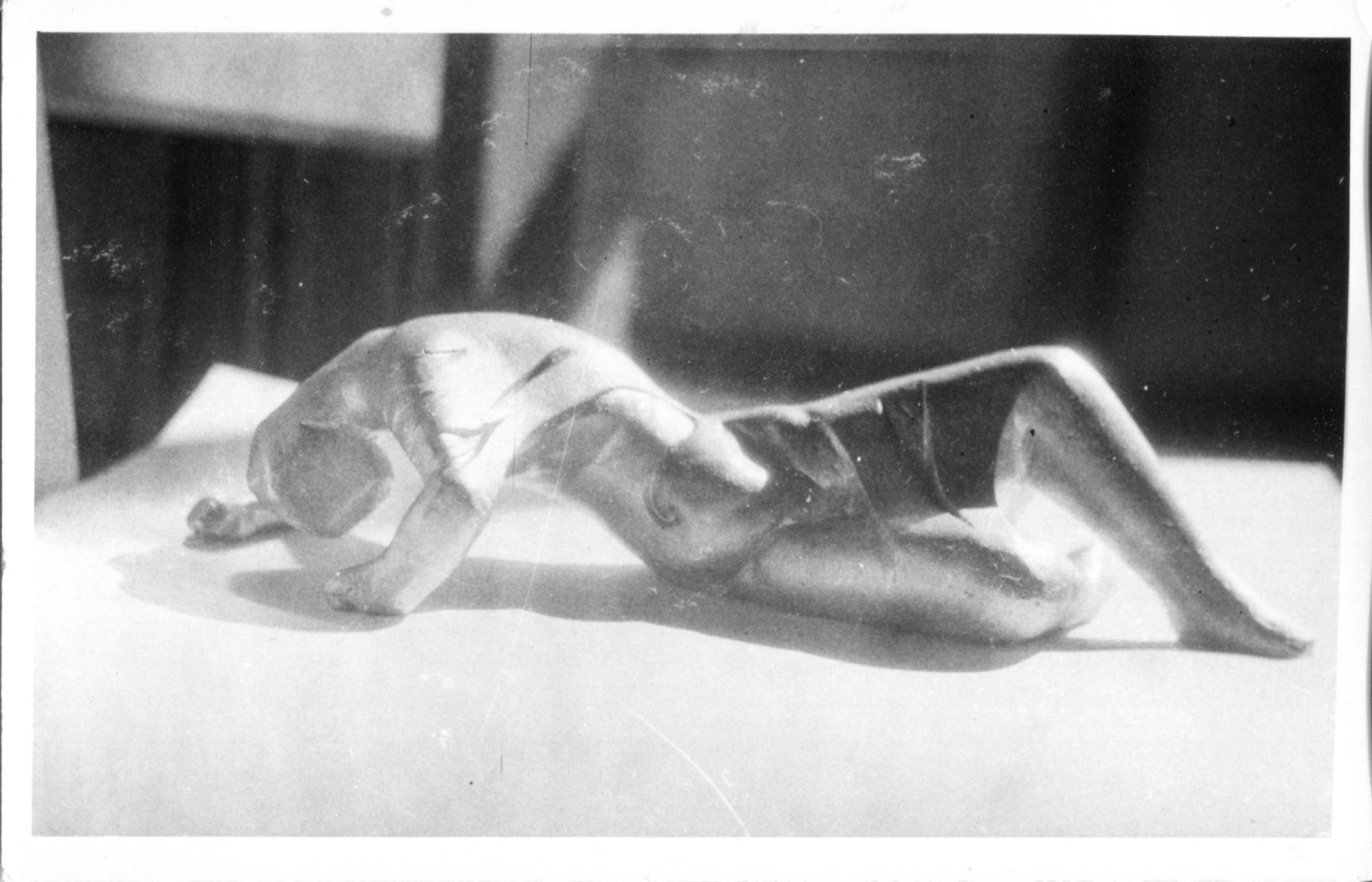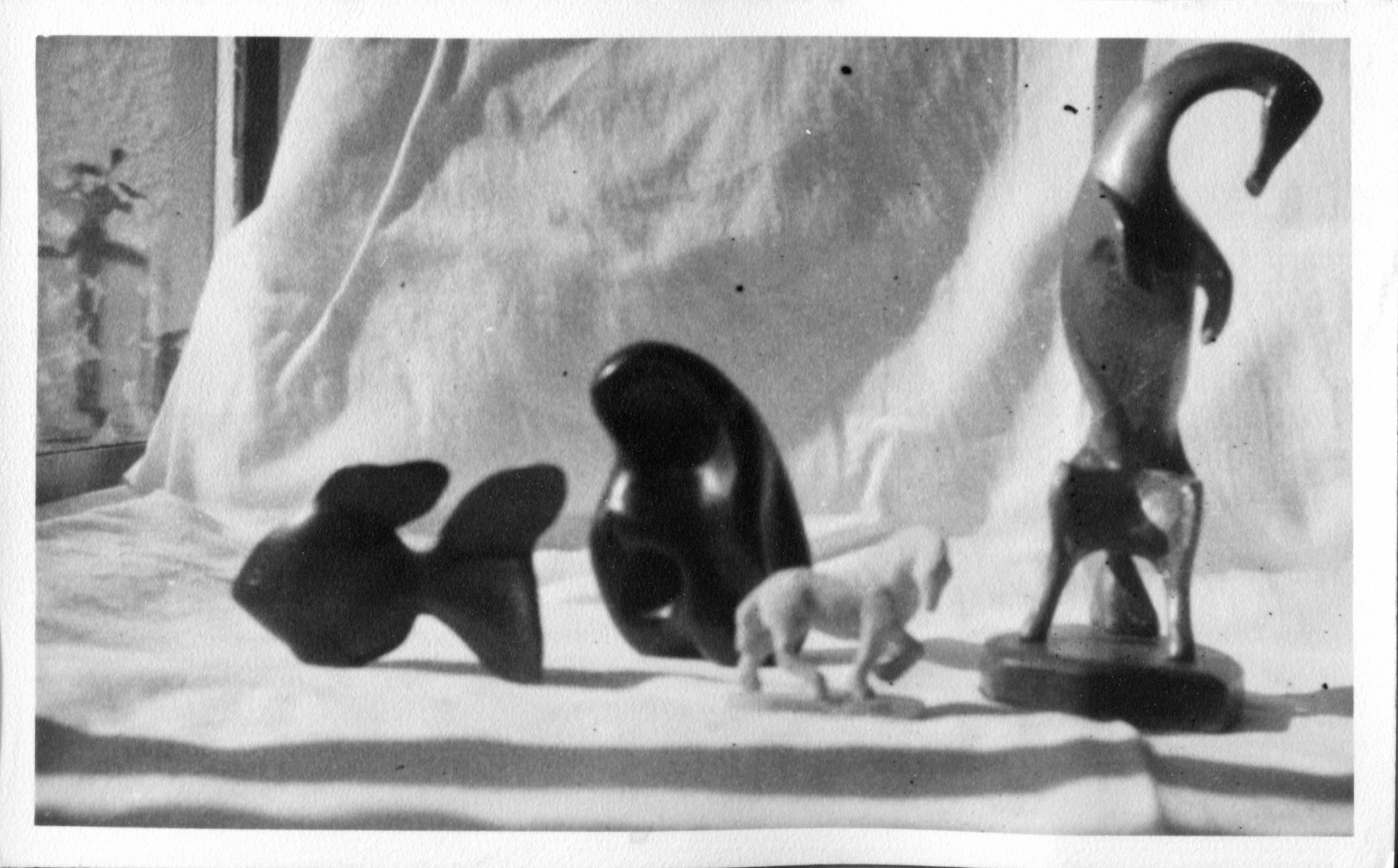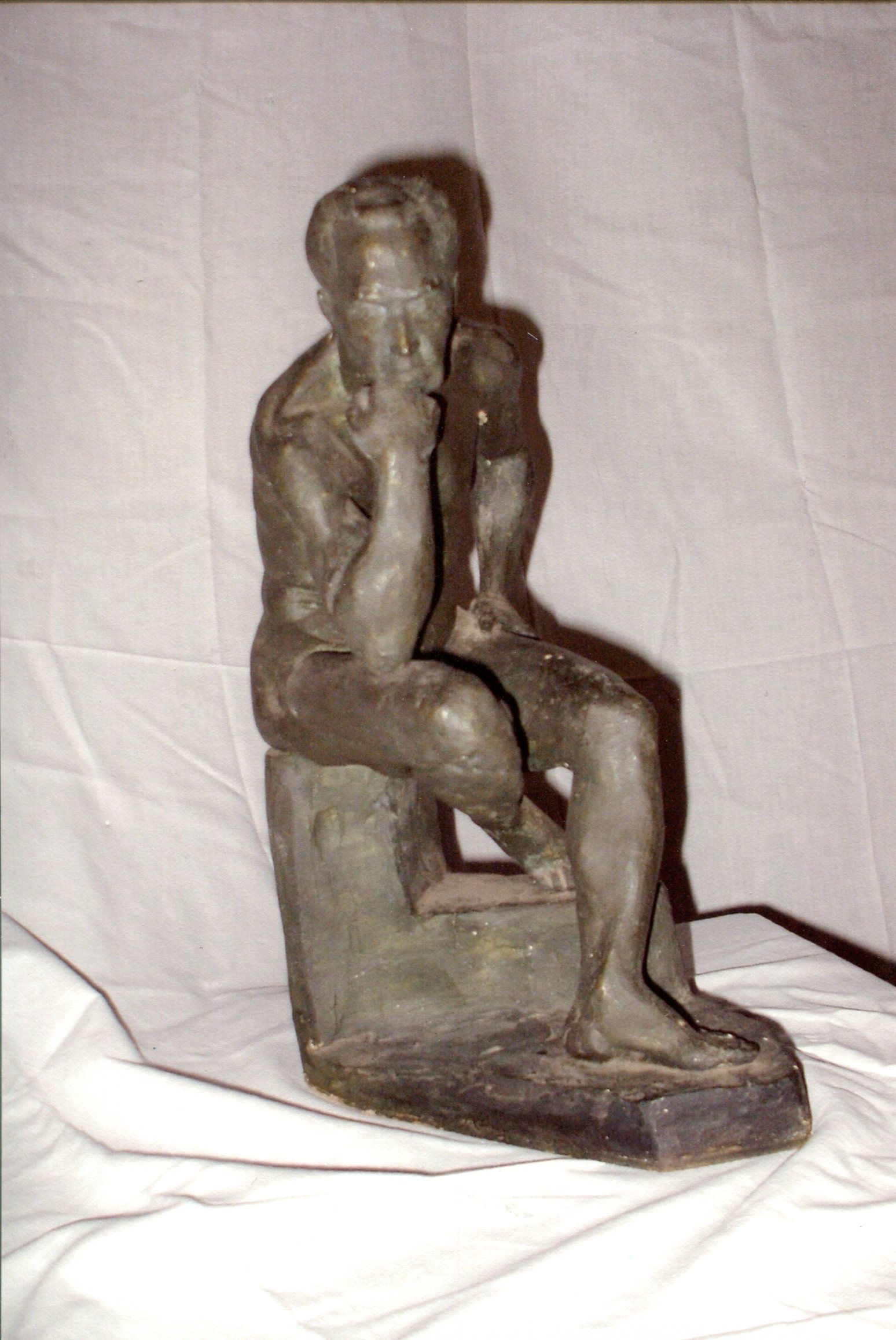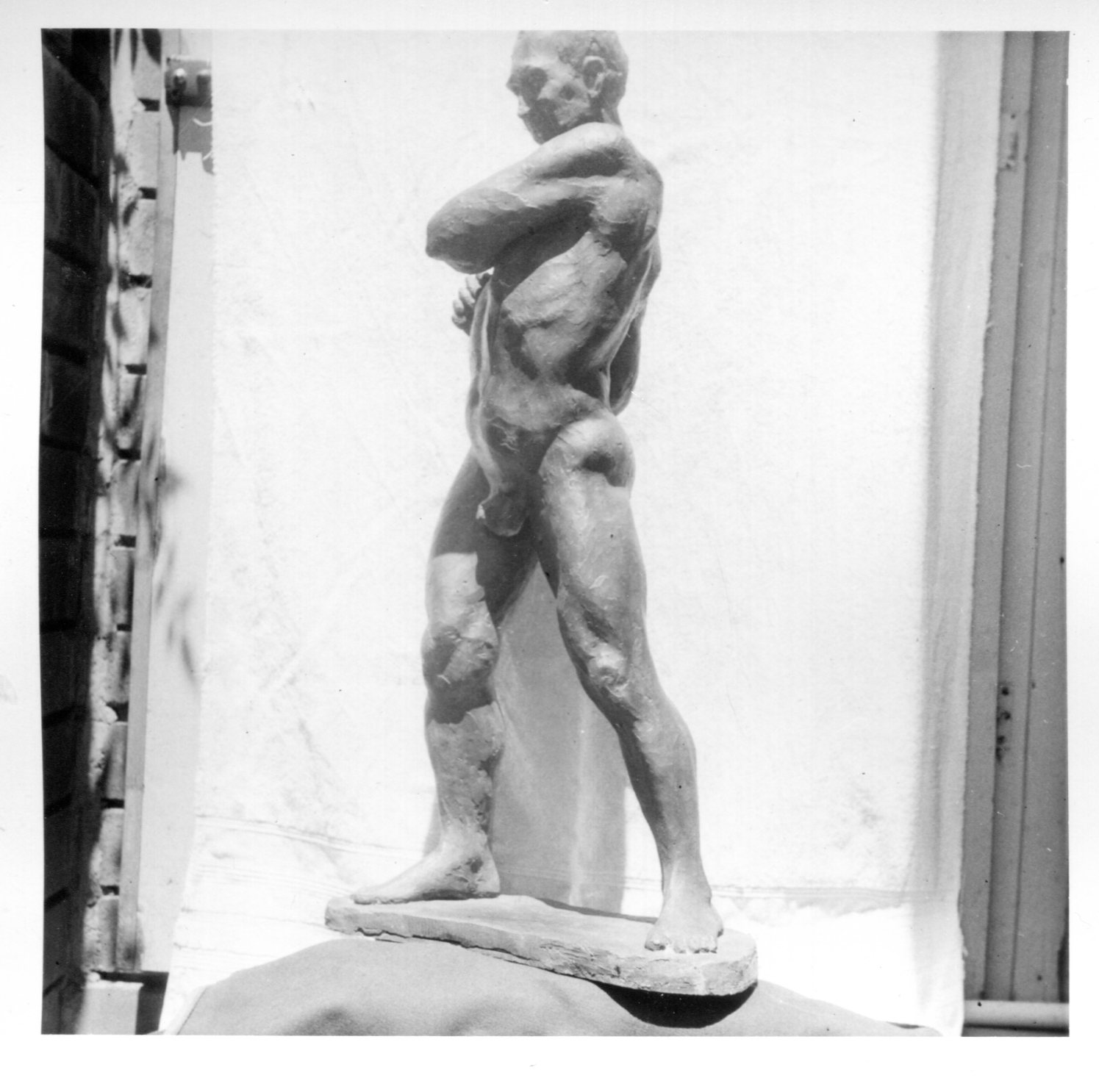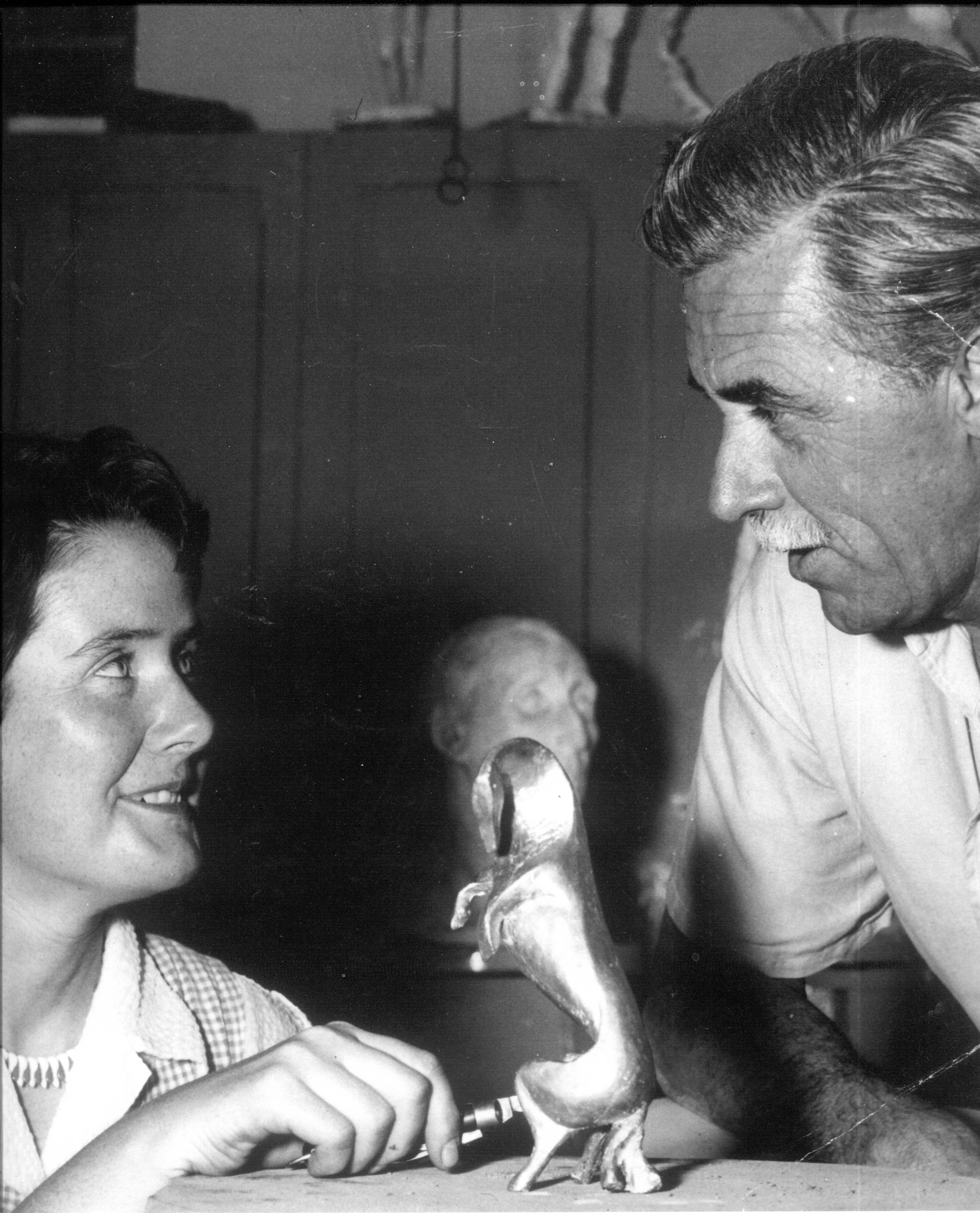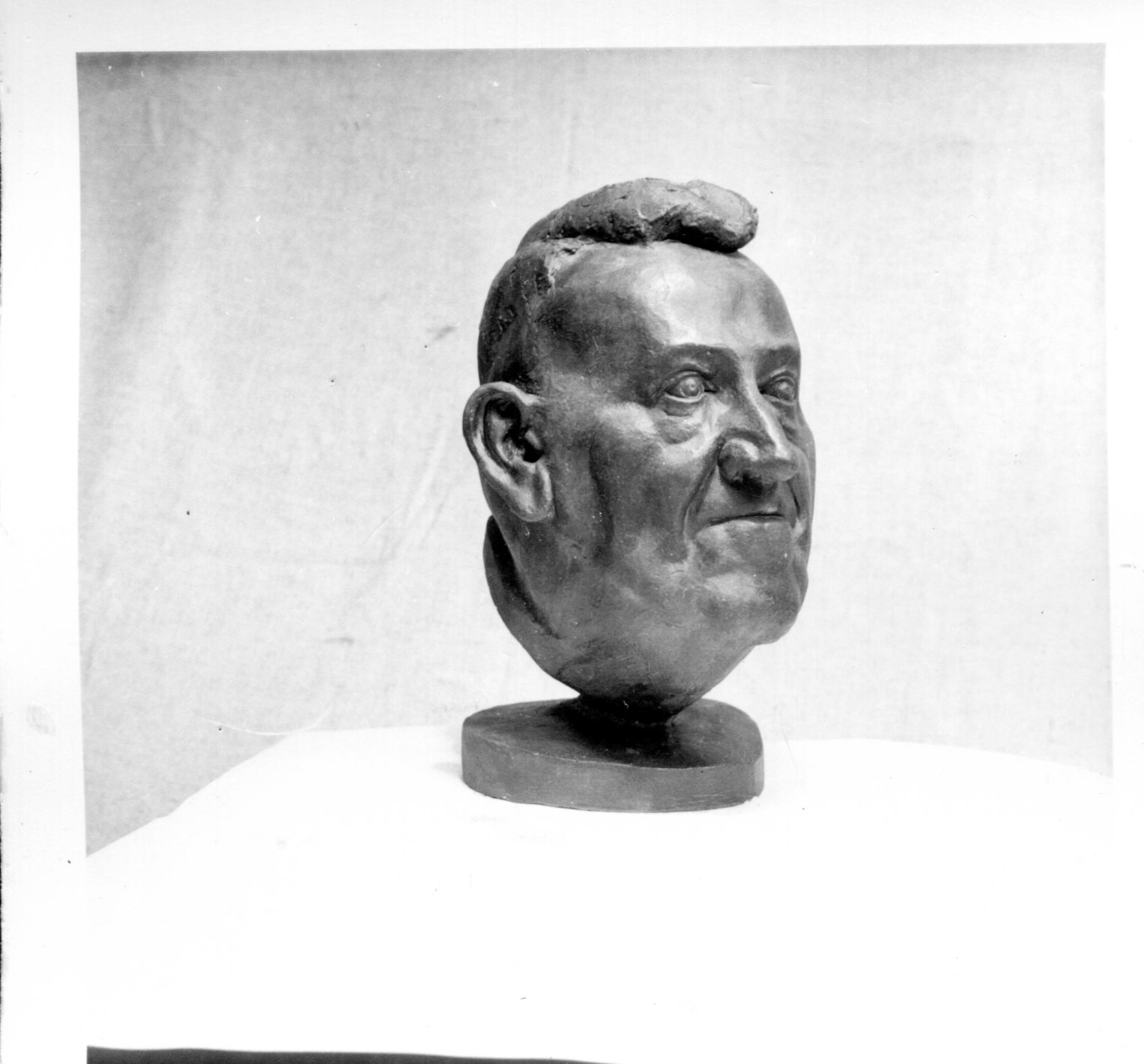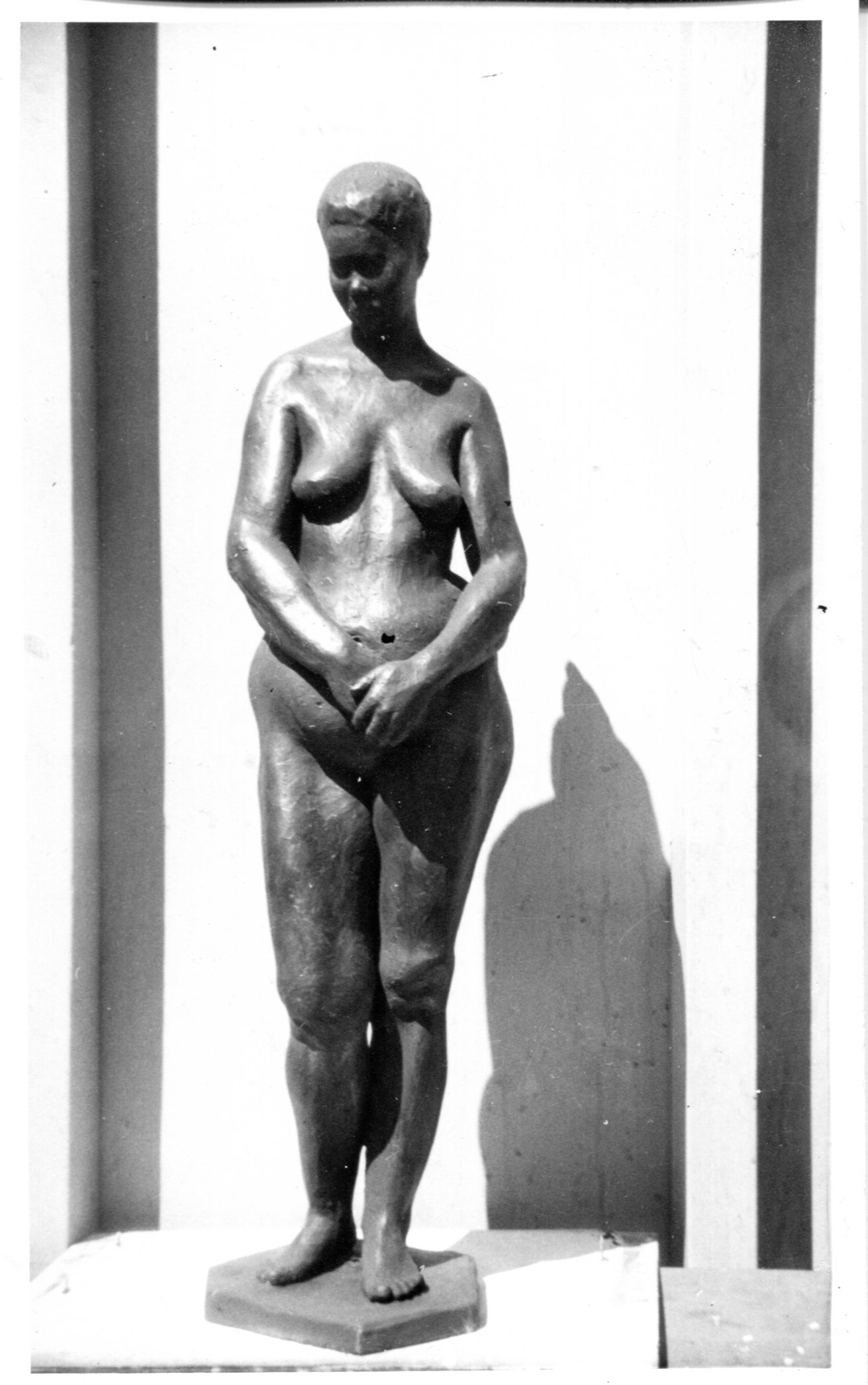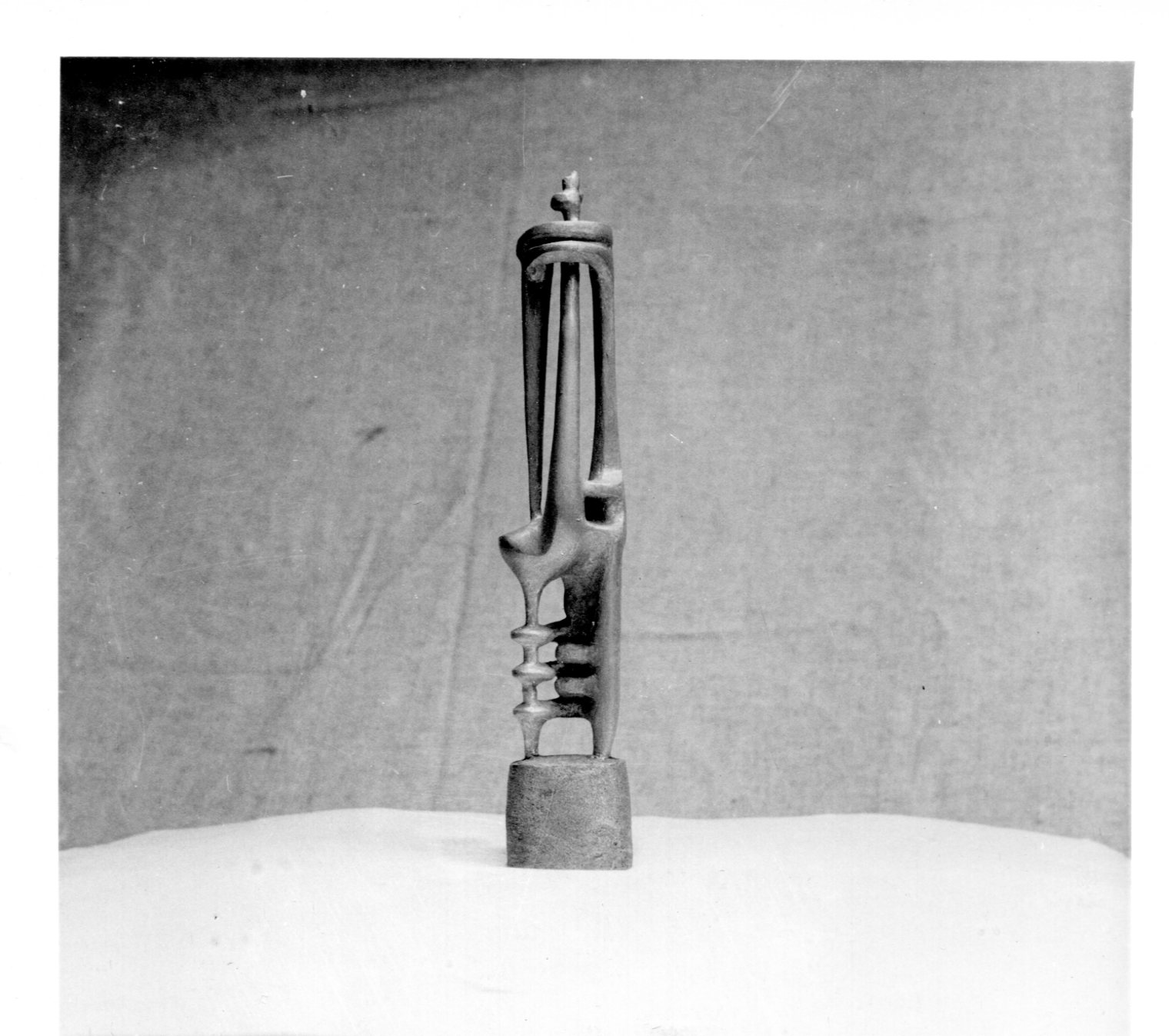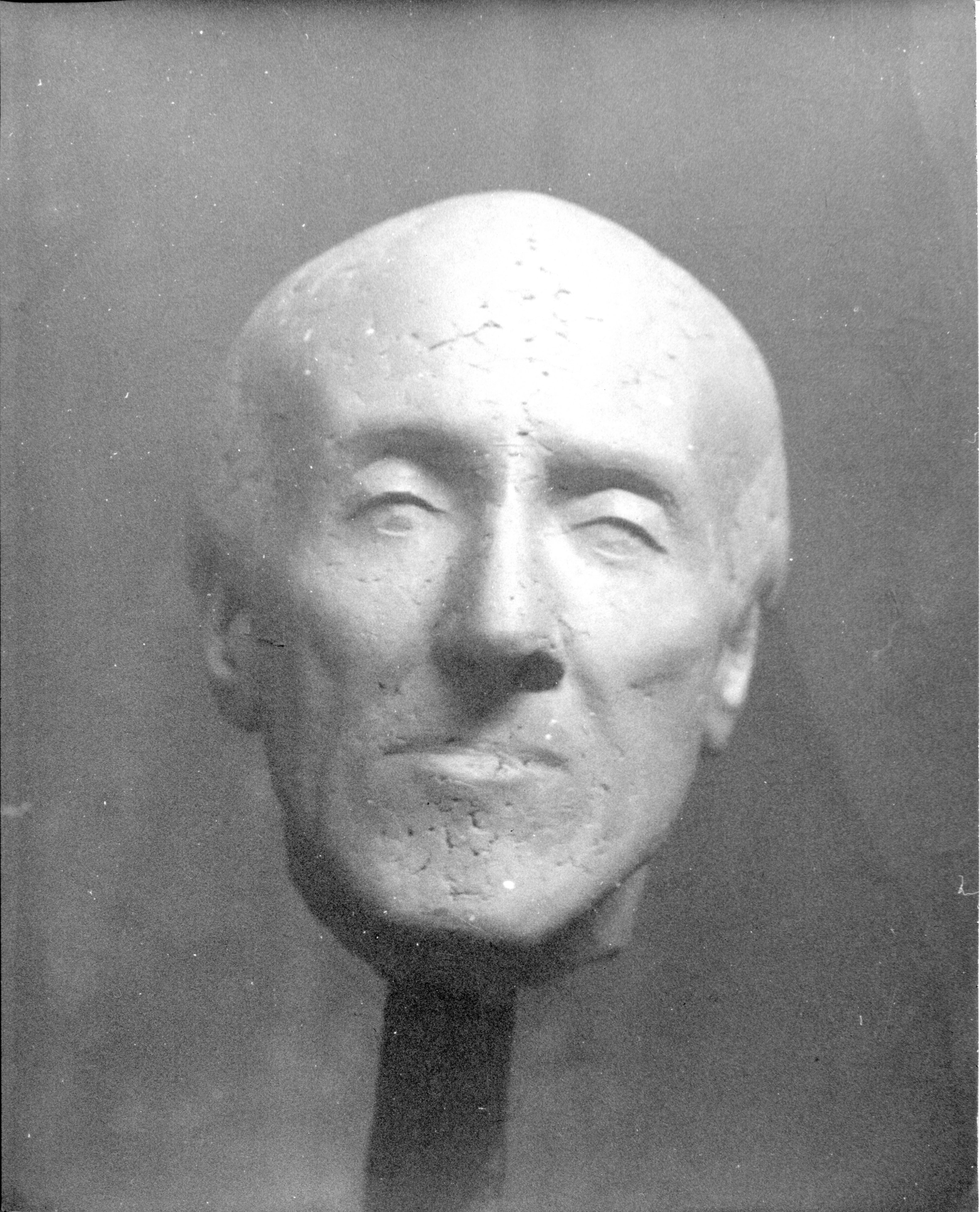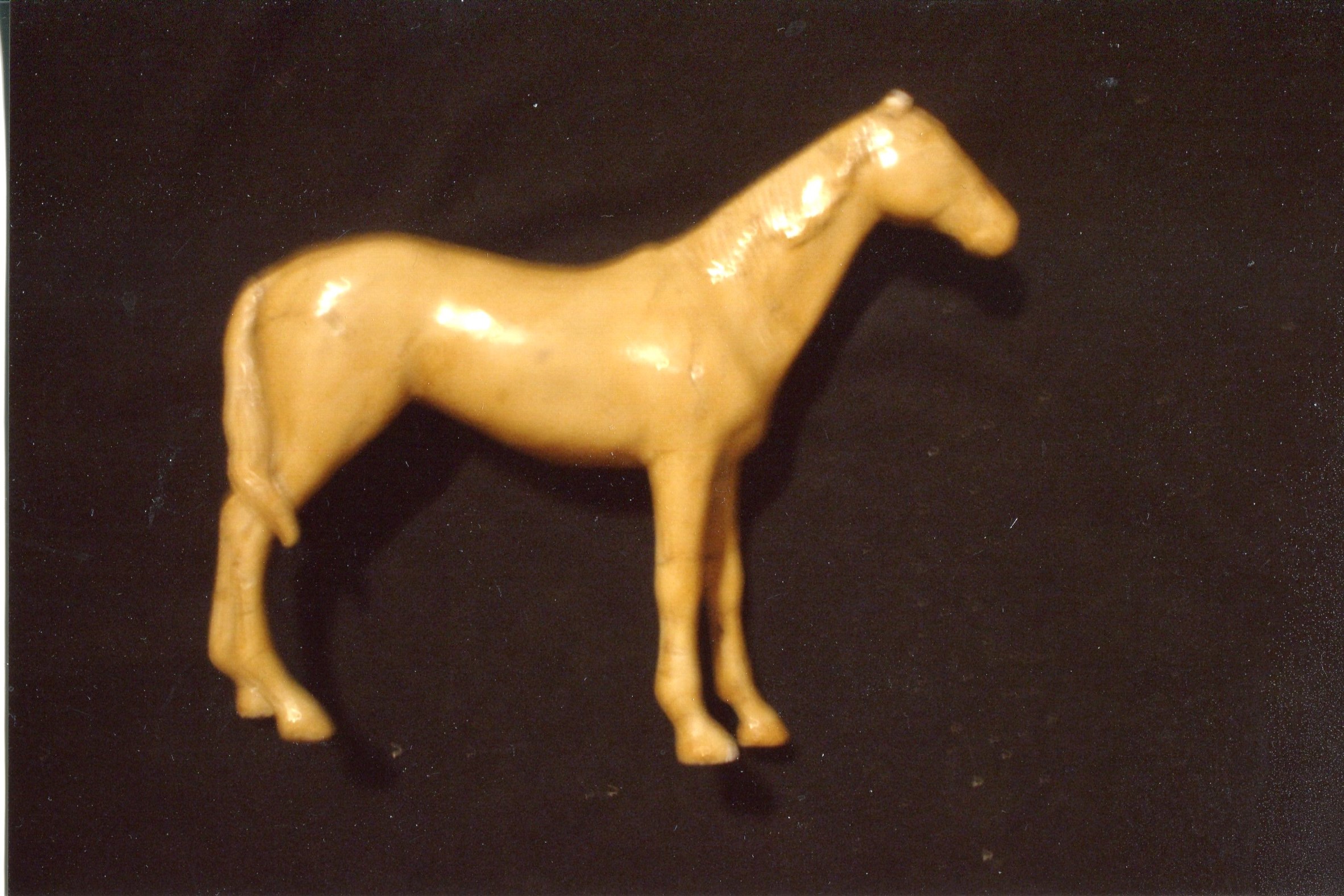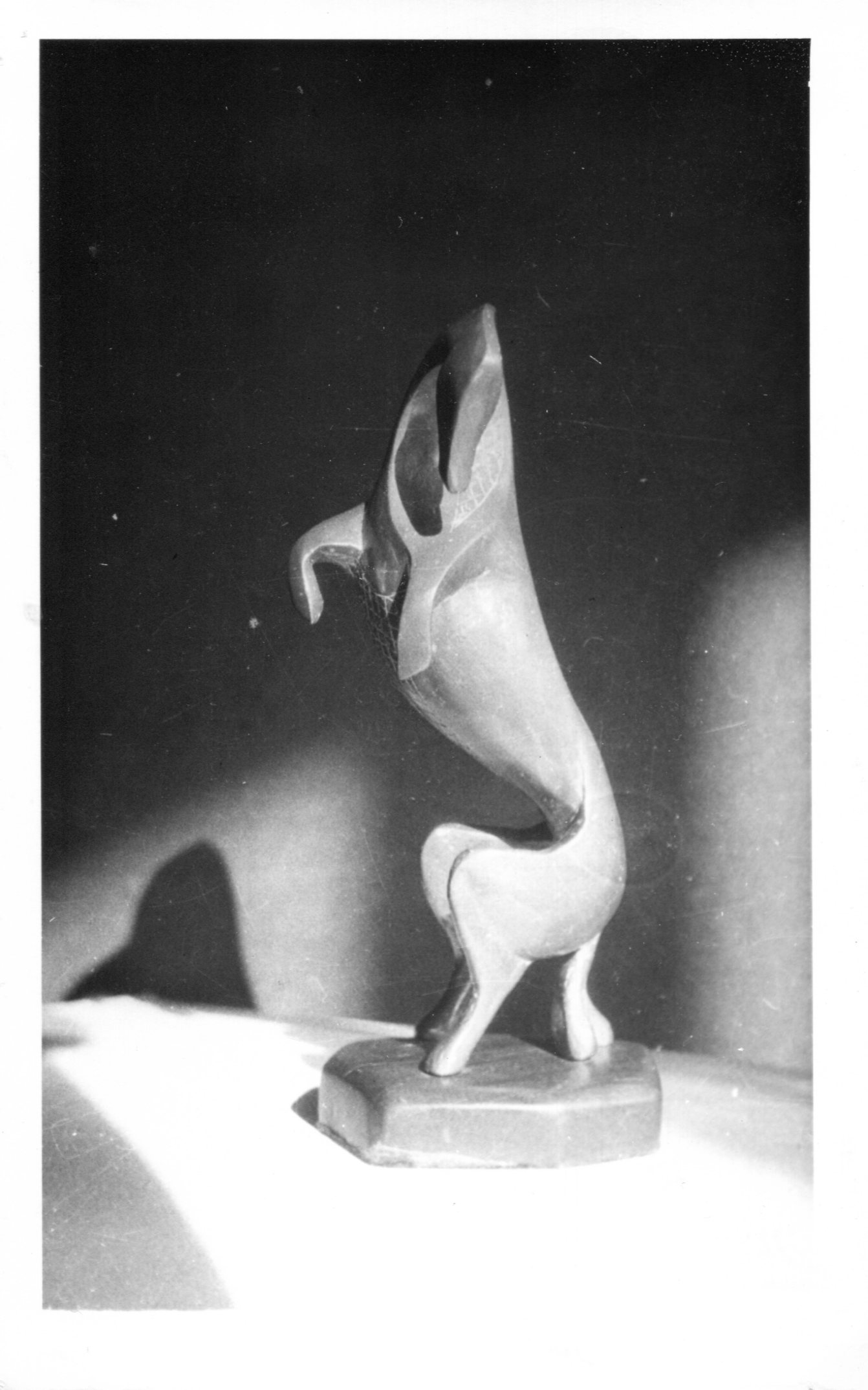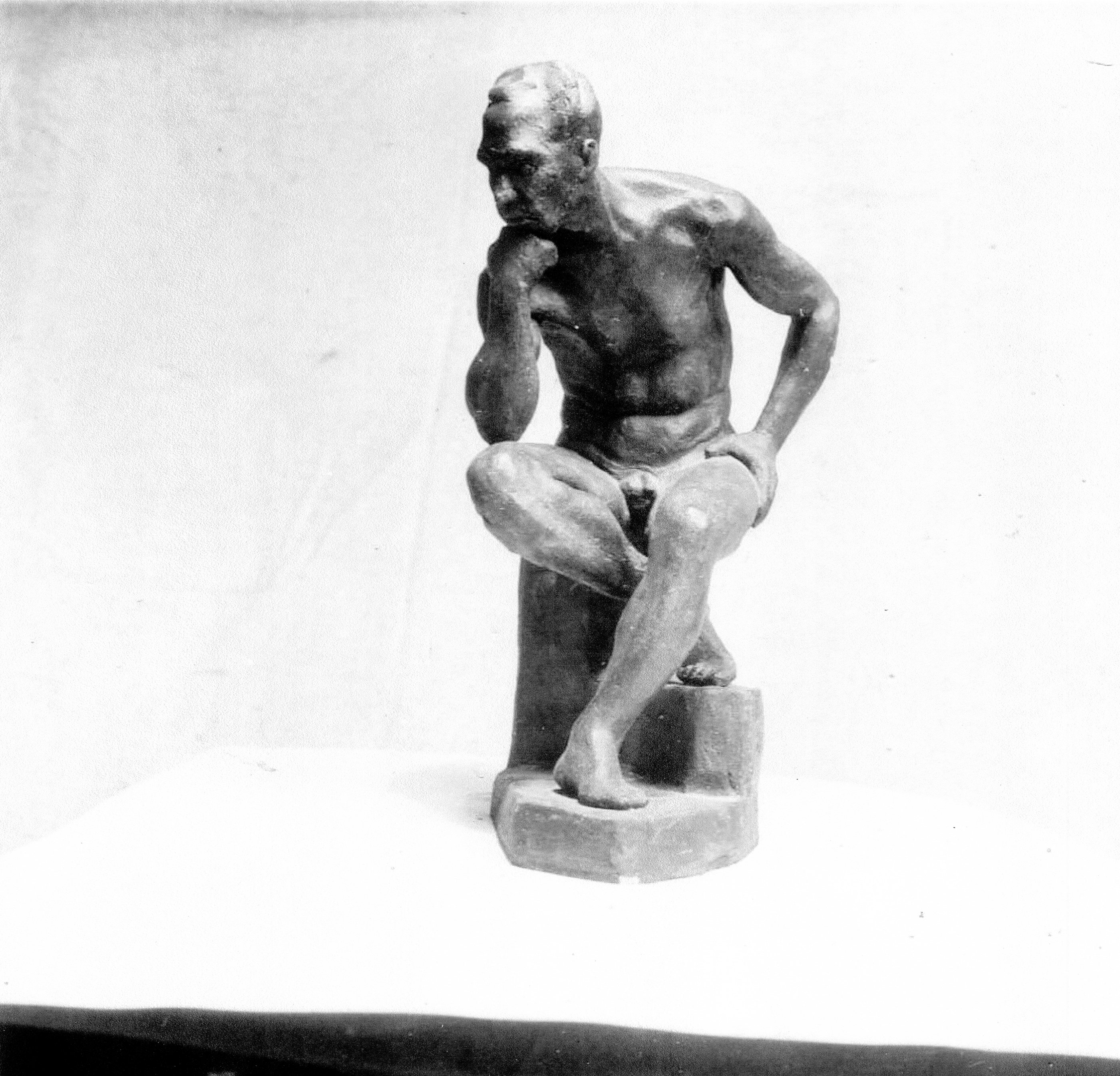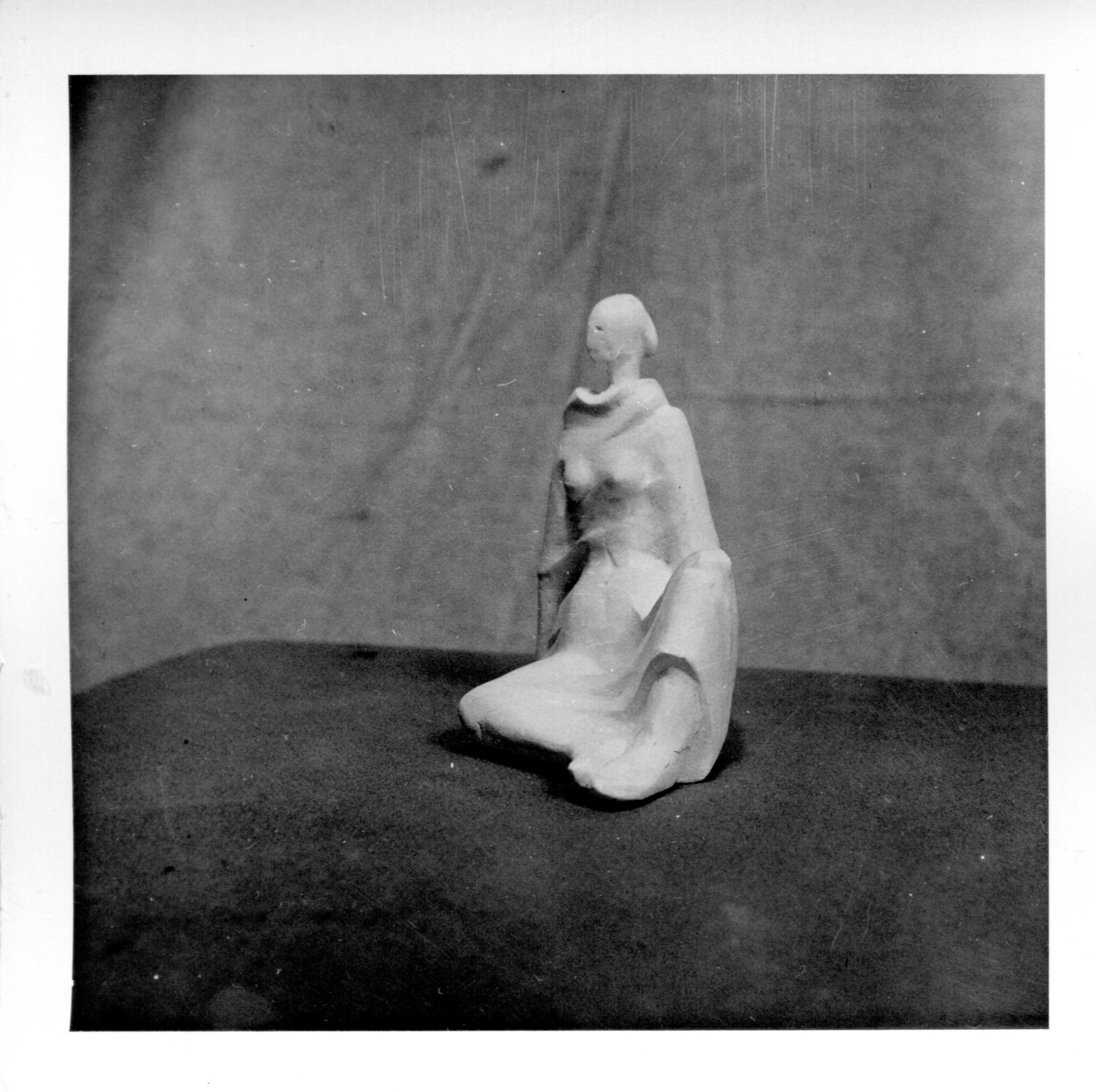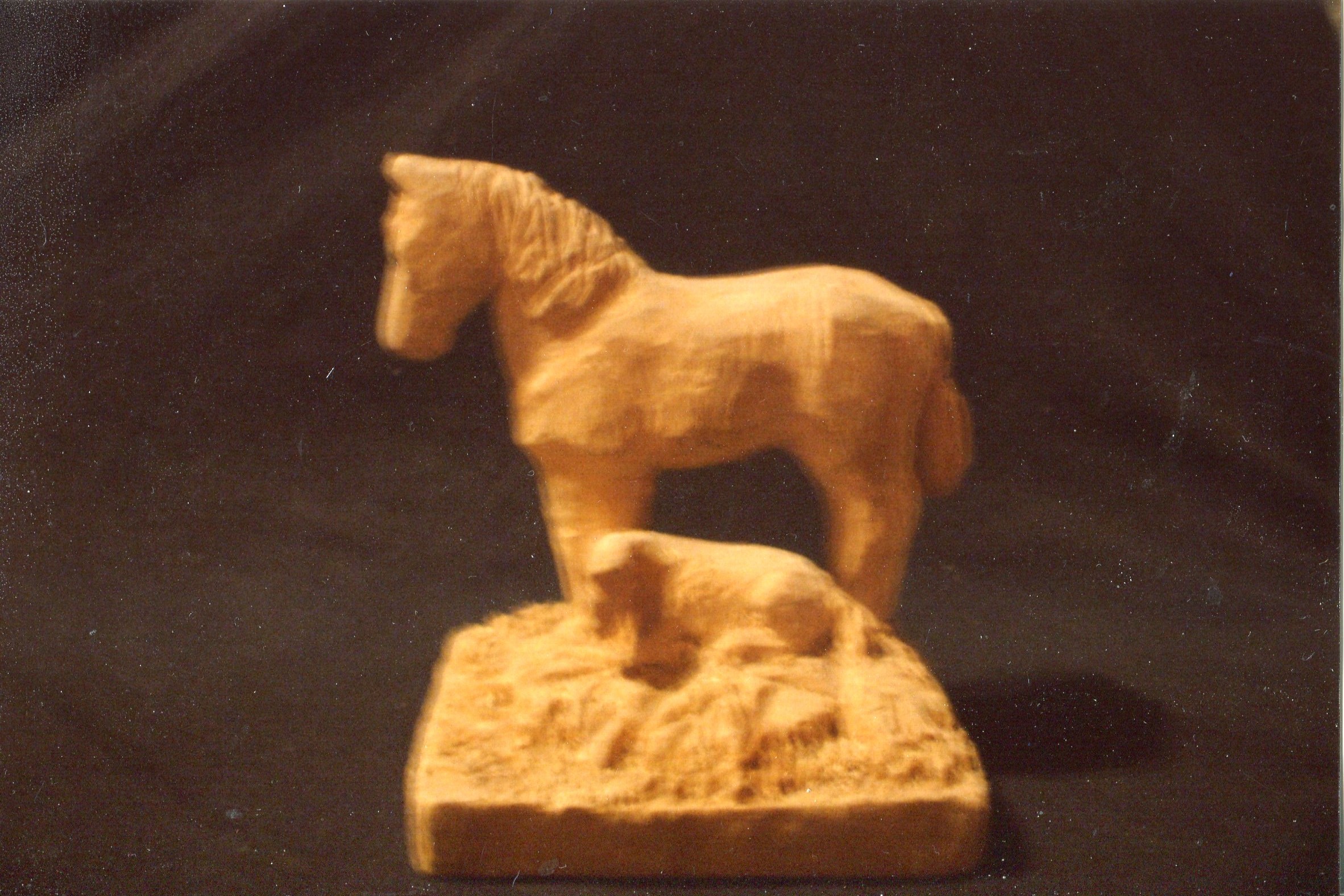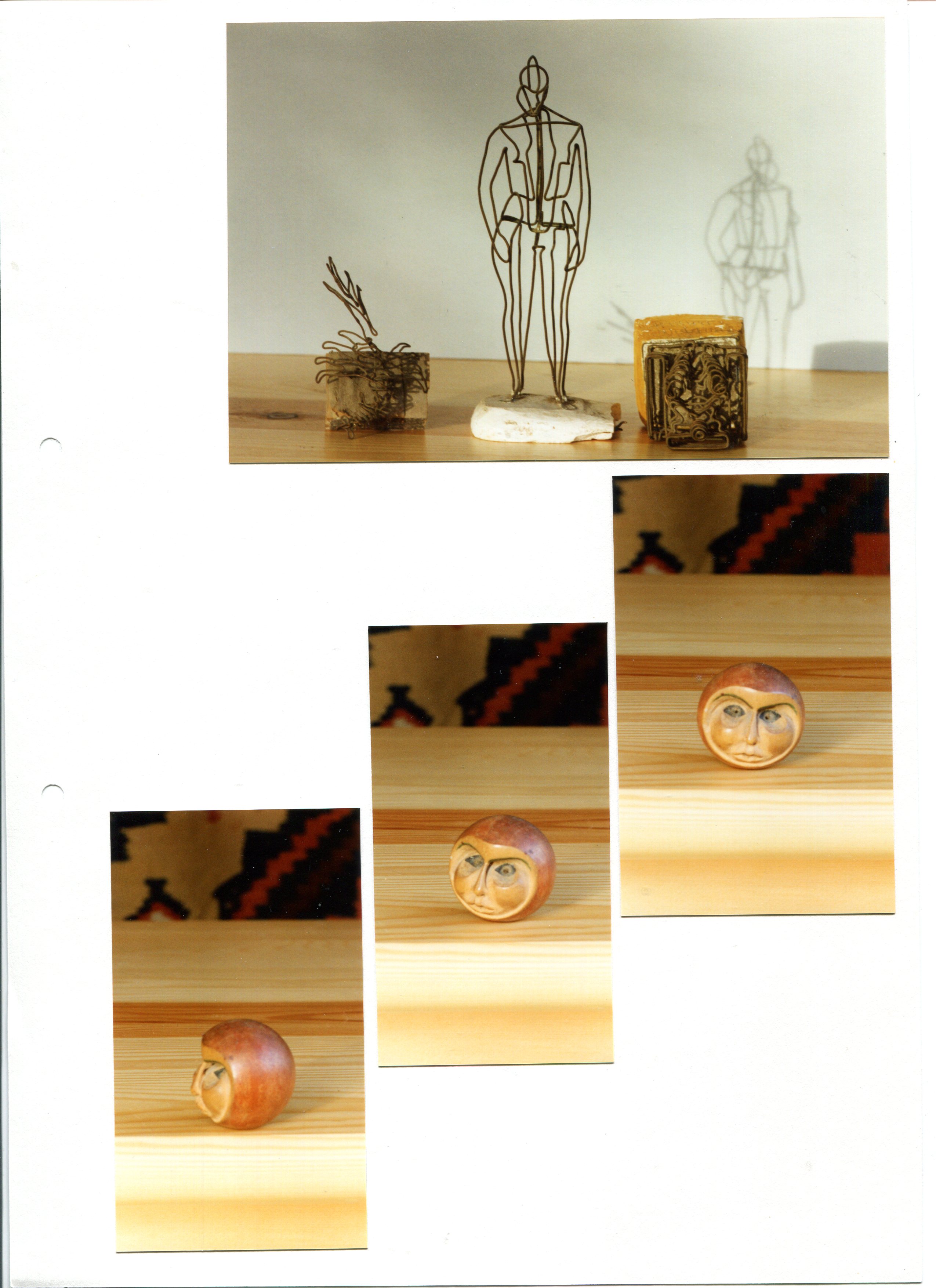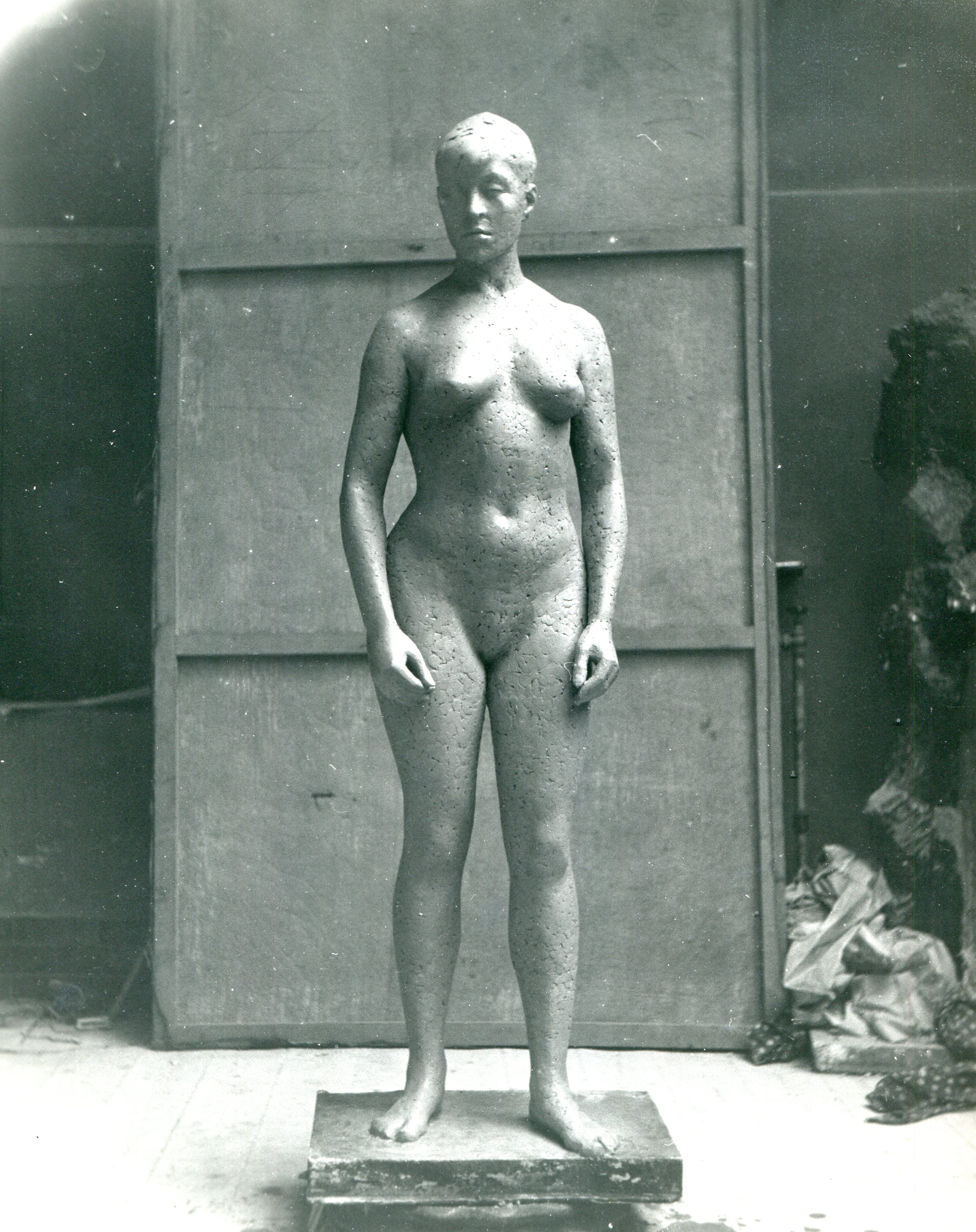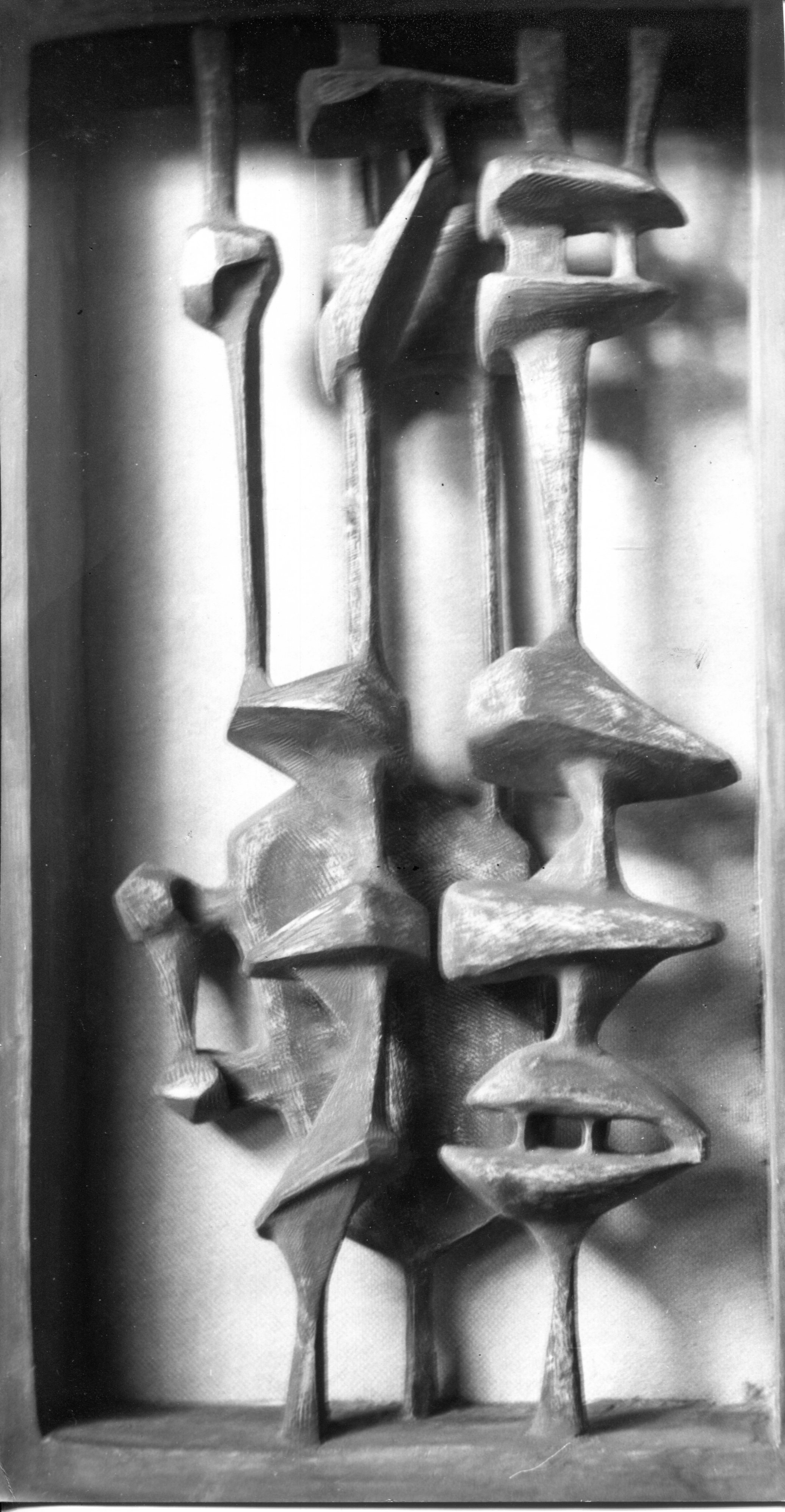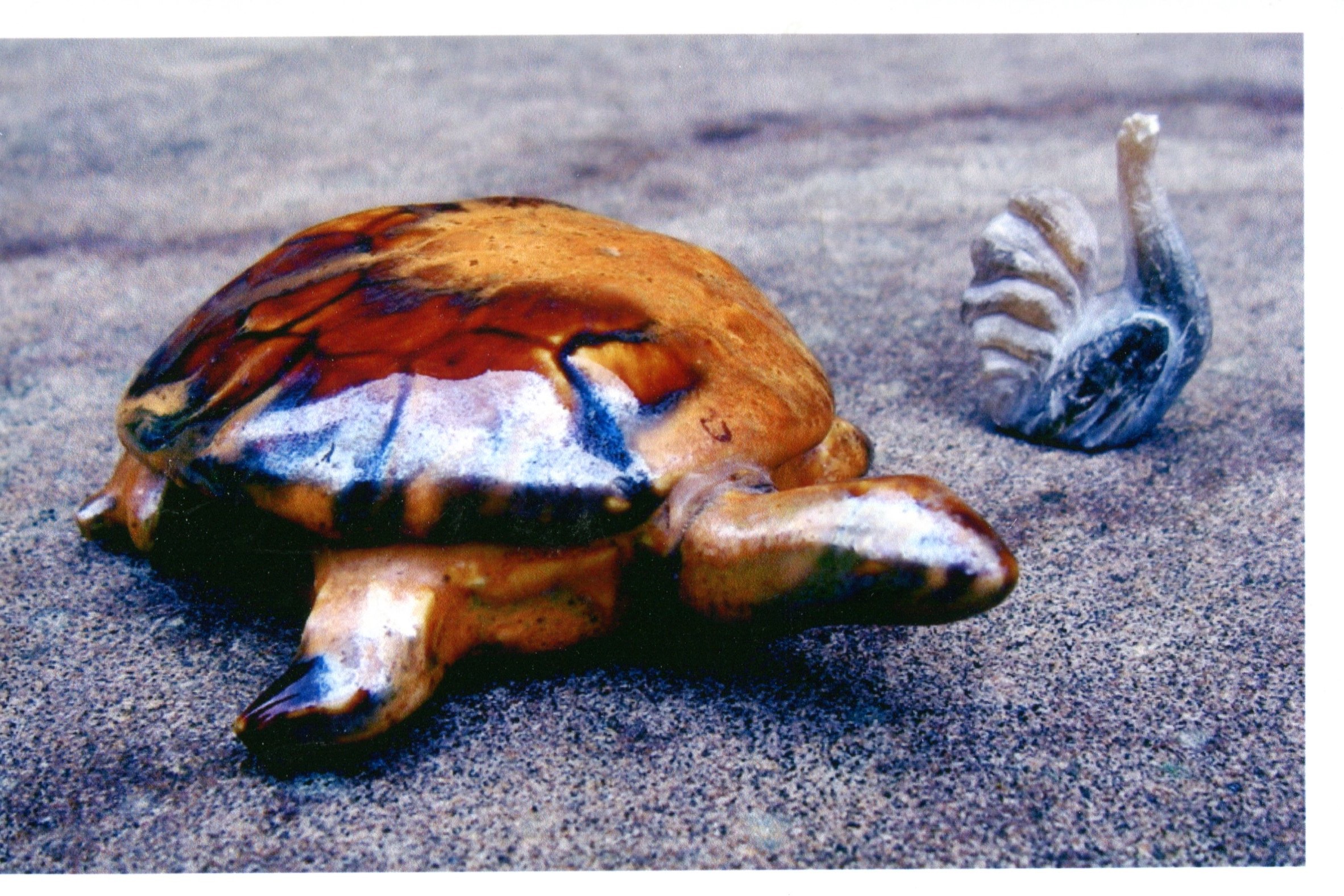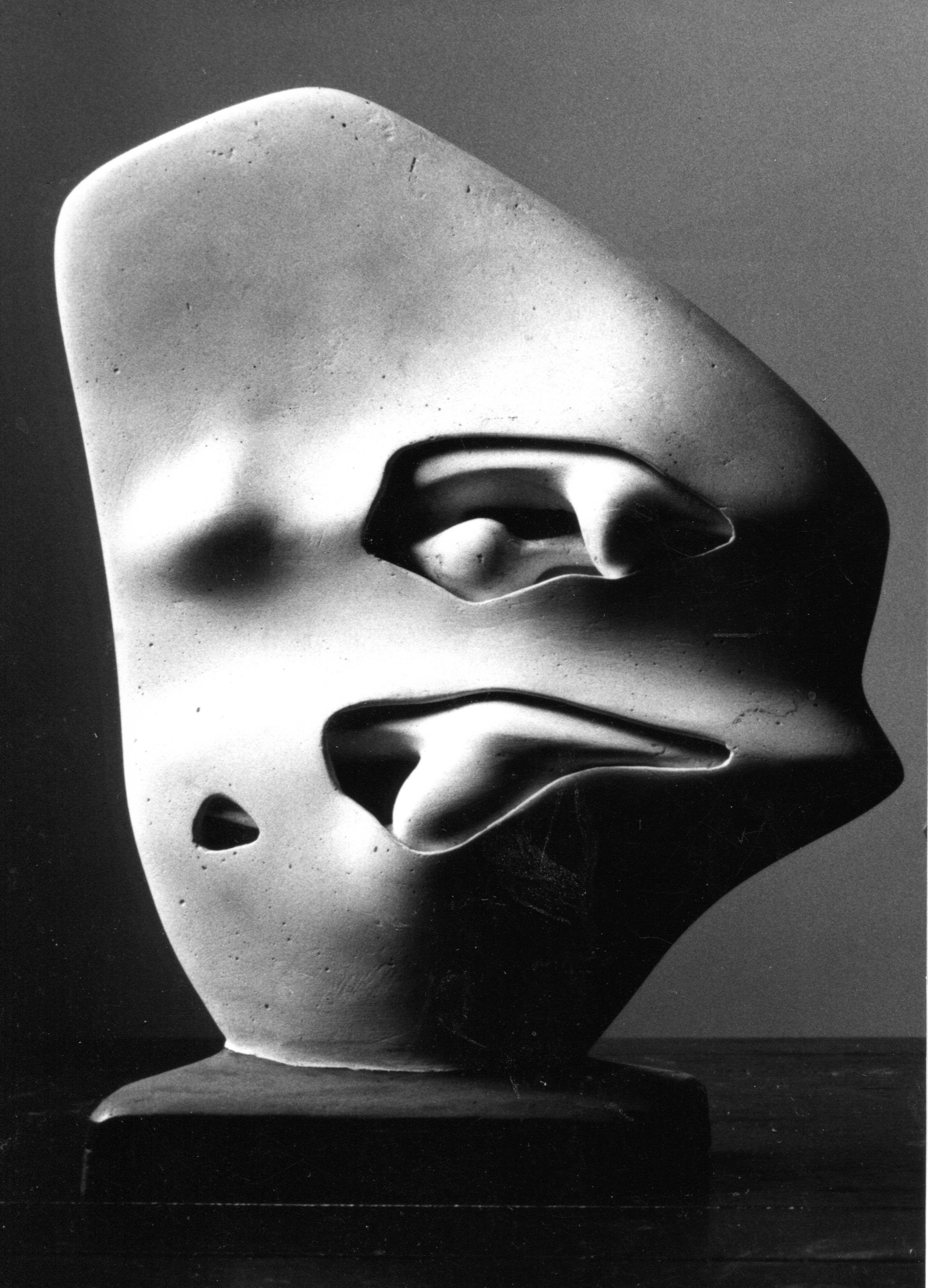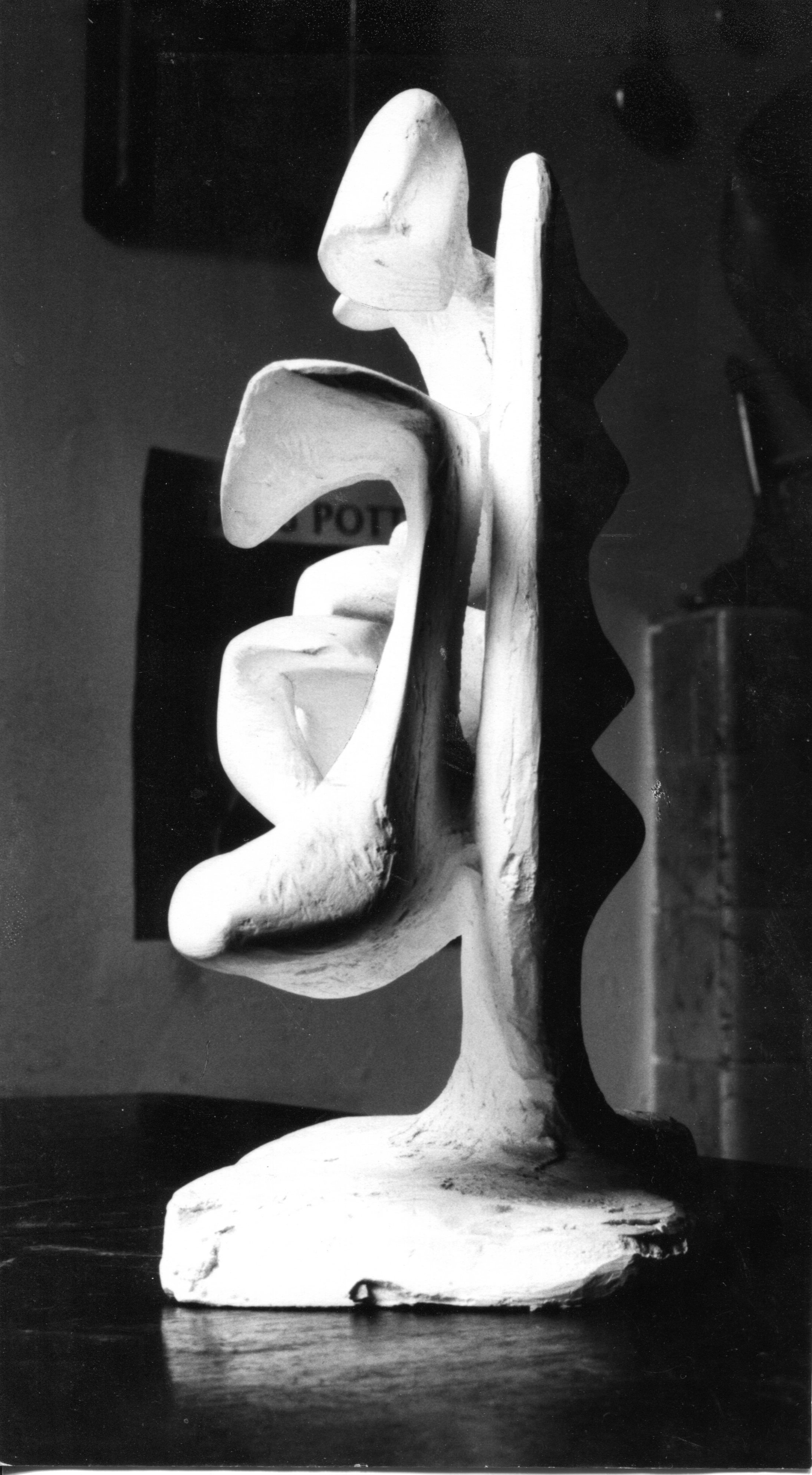Meg Rutherford probably became influenced towards sculpture when she was a little girl, by her father's numerous crocodile skeletons brought back from his annual trips to the Northern Territory, Australia. Later she became interested in natural forms as she patrolled her parents' farm after leaving school.
She had already demonstrated an aptitude for modelling, in clay or fettling wood. Meg went as a Nanny to a family to look after their three young daughters. The girls wrote in 2007 Meg would go down to the paddock and return with a carving made from a root of a tree. She carved rattles (for want of a better description) from a single piece of wood. These were oblong with a square cross section. The ends were solid and the sides were carved into four slim columns with a freely moving ball trappedinside. Meg showed us how to model clay and she made for each of us of a little clay animal that she glazed and baked in our stove.
Sculpture training
Meg enrolled in a sculpture course, once she had been encouraged to do so initially by the girls' father being rather artistic, he recognised Meg's talent and encouraged he to go to Art School. Meg's mother also encouraged her to do so.Meg enrolled at the National Art School, Sydney in 1955.Lacking the necessary educational qualifications Meg was not able to enrol in the Diploma Course. Here, over three years she developed considerable skill and a large output, under Senior Sculpture Lecturer Lyndon Dadswell. In Meg's last year, Dadswell invited her to assist him on the Newcastle, (Australia) War Memorial Cultural Centre commission, unveiled on 26 October 1957.However, at the end of three years the Principle of the N.A.S. stated Margaret Rutherford has attained a standard equal to the best of the Diploma students. The Diploma was awarded to her.
Having graduated from the National Art School, Meg saved up to come to UK. For a short while she studied at St Martin's School, pending the progress of her application to join the Slade School of Art, London University.Initially she lacked the necessary educational levels to qualify for entry despite a Diploma from the National Art School, Sydney; but her clear skill led her not only being permitted to enrol, but also to go straight into year two, thus reducing her course to three years from 1958 to 1961.At both the National Art School, Sydney and at The Slade School, drawing was something all sculptor students were required to do, but Meg drew almost to the exclusion of all activities other than sculpting. In a tape recording Meg Rutherford said "I was sorting for the Slade. You have to submit sixteen drawings, but I had over a thousand of these things. I used to be compulsive about drawing. I used to draw every single time I had a second; it was something I could not be without'. Most of these drawings and sketches are pen and ink or pencil, with colour wash on some."
About her career
Meg had a successful career as a sculptor through to 1967, She used most materials, including plaster. She had a few sculptures cast in bronze, but the cost was generally far too much for her to afford. She sold many of her creations. She was represented at twenty-five exhibitions in UK and abroad. She had an abstract sculpture in wood accepted for the Royal Academy Summer Exhibition in 1961. She married in 1966, having been introduced to her future husband by the purchaser of the Royal Academy sculpture. Meg Rutherford mostly chose natural forms for her sculpture, eventually choosing to create these forms within a cube. Having done so and having produced about twenty of them she declared she could go no further with her sculpture.
Six of these cubes were selected to represent Great Britain in the Britain Today pavilion at the 1967 Expo in Canada. On 13th April she wrote "I have just had the courage to phone the (Central Office of Information) about who else they chose for Expo 67!!Moore, Hepworth, Armitage, Paolozzi, Chadwick (I think). I would never have believed it!! Also Kim Lim, Mark Ingram and me!, the little ones with the big ones. Now we must go to Canada!!!" She did.
. Through 2008 to early 2010, one of Meg's bronze works, was included in the Arts Council touring exhibition Unpopular Culture' alongside some of the leading British sculptors of the post WWII era. Grayson Perry, who selected the exhibits was drawn to the craftsmanship and integrity of the Collection's bronze sculptures. The selection includes Henry Moore, Antony Caro and Kenneth Armitage: the polished abstractions of Barbara Hepworth and the linear spiky forms of Lynn Chadwick, Eduardo Paolozzi ,Elisabeth Frink and Meg Rutherford. Sadly, Meg was not alive to enjoy that success.
